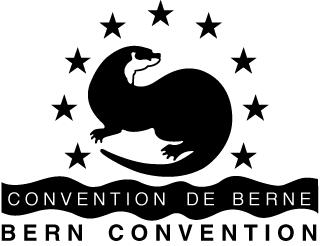
Strasbourg, 31 July 2025
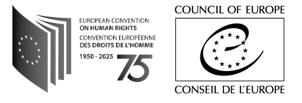
T-PVS/Files(2025) Rec No. 95 (2002)_comp
CONVENTION ON THE CONSERVATION OF EUROPEAN WILDLIFE AND NATURAL HABITATS
Standing Committee
45th meeting
Strasbourg, 8-12 December 2025
Bureau of the Standing Committee
16-18 September 2025
Strasbourg
Recommendation No. 95 (2002) on the conservation of marine turtles in Kazanli beach (Türkiye)
Document prepared by MEDASSET
Update Report, received 31 July 2025
UPDATE REPORT BY THE NGO
Marine Turtle Conservation in the Mediterranean
FOLLOW-UP OF RECOMMENDATION NO. 95 (2002) ON THE CONSERVATION OF MARINE TURTLES IN KAZANLI BEACH (TURKEY)
31 July 2025
Document presented by MEDASSET - the Mediterranean Association to Save the Sea Turtles
for the 45th Standing Committee Meeting of the Contracting Parties to the Convention on the Conservation of European Wildlife and Natural Habitats (Bern Convention)
MEDASSET hereby submits an update report to the 3rd Bureau Meeting of the Bern Convention (16-18 September 2025) on the conservation status of sea turtle nesting beaches in Kazanli, Turkey.
Contents:
• SUMMARY
• ANNEX 1: KAZANLI DETAILED UPDATE, BACKGROUND, MAPS & PHOTOGRAPHS
• ANNEX 2: REFERENCES
• ANNEX 3: VIDEOS
Production and dissemination in full or in part of this publication for non-commercial purposes are authorised without any prior written permission provided the source is fully acknowledged and cited.
SUMMARY
Kazanli beach is located in southern Turkey. It is one of the top three most important green turtle (Cheloniamydas)nestingbeachesintheMediterranean.ConservationproblemsregardingKazanli,were first reported to the Bern Convention in 1999 and have since been discussed regularly at its annual Standing Committee Meetings. In 2000 and 2001, MEDASSET alerted about the release of toxic waste intothe seafrom the beachside SodaChromeFactoryandseawater sample analysis revealed chromium concentration 13.500 times higher than permitted levels. A case file was opened in 2000, followed by Recommendation No. 95 (2002) “on the conservation of marine turtles in Kazanli beach (Turkey)”.
In July 2025, MEDASSET conducted a site visit to Kazanli Specially Protected Area (SPA) to assess the management and conservation status of the nesting beach. The survey was funded by Aktionsgemeinschaft Artenschutz (AGA), www.aga-artenschutz.de
Fieldwork was carried out over three days, encompassing both daytime and nighttime surveys. A high nesting density of green sea turtles (Chelonia mydas) was recorded within the Kazanli Specially Protected Area (SPA), with a notably significant increase observed in the K1 sector.
The findings indicate that conservation and protection activities in the area do not comply with standardized protocols or consistent conservation practices.
During the field survey, the current status of issues previously highlighted in the former report was examined in detail. We documented the significant and alarming issues, which remain:
There is still insufficient action in relation to five measures that require continual implementation, resulting in widespread litter (Point 3), lack of nest monitoring (Point 5), lack of information (Point 7), and signs of agrochemical pollution (Point 14).
Six measures have not been implemented to date: Points 1, 4, 6, 10, 11, and 13.
Widespread plastic pollution was documented throughout the beach, while petroleum contamination and unauthorized waste discharges (white crystallized residue) were identified in the section near the Soda-Chromium factory. Please see photos and video submitted. No removal of the
hazardous waste was documented. In addition, of extreme concern is the direct discharge into the sea that has been detected and the presence of white crystal chrome residue on the beach. (Point 5).
Details about our summer 2025 survey findings, photographs and video are provided in our “Detailed Report” (Annex 1, 2 and 3).
To date, Recommendation No. 95 (2002) has not been implemented! Our detailed report underscores the pressing need for its full implementation. The issues identified over two decades ago remain unresolved, and no improvement can be reported regarding the condition of this critically important nesting beach.
It is of urgent priority that the Turkish authorities take immediate action to address the longstanding conservation and management challenges without further delay.
MEDASSET urges the Turkish authorities to:
• Fully implement all outstanding measures under Recommendation No. 95 (2002) without further delay.
• Protect the Kazanli nesting beaches from any form of coastal development or construction.
• Provide the requested information—first sought in 2021—regarding:
o Official maps and technical details related to the Kazanli Tourism Development Plan and/or Kazanli Beach Arrangement Project;
o The designation of areas for “Sustainable Development and Controlled Usage”;
o The identification of “Nature Conservation” zones.
MEDASSET also calls upon the Bern Convention Standing Committee to:
• Follow up on Recommendation No. 95 (2002) at the 43rd Meeting of the Standing Committee
• Urge the Turkish authorities to fully implement the Recommendation without further delay, and formally request the provision of the above-mentioned information.
ANNEX 1: DETAILED UPDATE, BACKGROUND SUMMARY, MAPS & PHOTOGRAPHS
KAZANLI, TÜRKİYE
In July 2025, MEDASSET conducted a site visit to Kazanli Specially Protected Area (SPA) to assess the management and conservation status of the nesting beach. The survey was funded by Aktionsgemeinschaft Artenschutz (AGA), www.aga-artenschutz.de
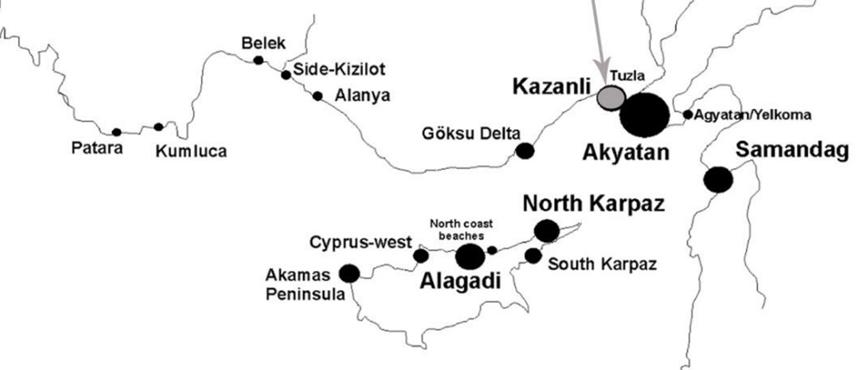
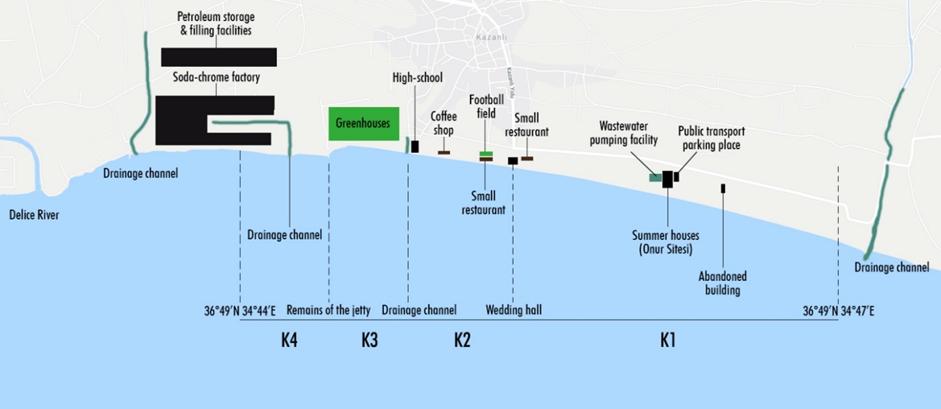
Fieldwork was carried out over three days, encompassing both daytime and nighttime surveys. The findings indicated that activities in the area do not comply with standardized protocols or consistent conservation practices. The survey results are presented below, structured according to each measure under Recommendation No. 95.
During the field survey, the current status of issues previously highlighted in the former report was examined in detail. A high nesting density of green sea turtles (Chelonia mydas) was recorded within the Kazanli Specially Protected Area (SPA), with a notably significant increase observed in the K1 sector. Widespread plastic pollution was documented throughout the beach, while petroleum contamination and unauthorized waste discharges were identified in the section near the SodaChromium factory.
The issues observed on Kazanli Beach are presented below under specific subheadings.
1. Remove as a matter of urgency, the row of greenhouses closest to the sea in beach section K3; remove, as soon as feasible, other greenhouses in beach section K3 through the appropriate legal and administrative procedures and restore that space to favour turtle nesting: No improvements have been observed regarding the issues related to greenhouse structures that were highlighted in previous reports. On the contrary, there are growing concerns about the potential expansion of greenhouse areas. In order to protect the structures from coastal flooding and dune movement, large rock barriers have been constructed along the shoreline. It has been observed that humus-rich soil was added behind these barriers in previous years, which raises concerns that this may facilitate further expansion of greenhouse operations in the future. In addition, plastic debris extending to the nesting zone was found lodged between the rocks (Figure 1). The coastline is directly illuminated by vehicle headlights from the secondary road that merges with the beach, and this area is also used for social gatherings at night, resulting in light and noise pollution. These disturbances are believed to contribute to the reduced nesting activity of sea turtles in this section (Figure 2). On the other hand, the artificial rock barriers in front of the greenhouses may be acting as light shields, potentially contributing to the increase in nesting frequency in certain areas (Figure 1). Intense rubble-type pollution was observed throughout the area, and several dead sea turtle individuals were encountered. Due to the advanced stage of decomposition, the cause of death could not be determined. Additionally, the carcass of a stray dog was also observed in the same area (Figure 3).
2. Moving the taxi parking area away from the beach as a matter of urgency:
Vehicle activity was observed in multiple areas along the Kazanli beach, particularly where access roads reach the shoreline. A large parking area was identified at the intersection of K1 and K2, where even heavy-duty vehicles were recorded parking at night (Figure 4). In addition, cars were found parked in close proximity to the nesting zone near the Onur residential complex, as well as in the parking lots of nearby restaurants and cafés. The continuous presence of vehicles throughout the day is believed to contribute to light and noise pollution in these areas, which likely results in reduced nesting activity (Figure: 5a-b). The Onur site is located in the K1 section of the beach and utilizes artificial lighting in its parking area. Although amber-colored lights were preferred, which is generally considered a sea turtle–friendly lighting practice, adjustments are still needed. Shielding and proper orientation of the lights should be implemented to minimize their impact on the nesting beach. In contrast, the restaurants located in the K2 section use high-intensity white floodlights in their parking areas. Although intended for parking illumination, these lights significantly affect the adjacent beach. Notably, no nesting activity was observed near the restaurant zone (Figure: 6).
3. Periodically removing the plastic debris from the beach:
Pollution has been observed throughout the entire beach. The majority of the pollution consists of plastic waste (Figure 7). No regular cleaning efforts by the municipality, industrial facilities, or local residents were observed. However, a rehabilitation effort was noted in front of a restaurant. Overall, there is a significant level of pollution on the beach.
4. Screening the lights of the municipality of Kazanli and the Soda-Chromium factory so as to avoid photo-pollution on the beach:
Inpreviousyears,followinganapplicationbyalocalnon-governmentalorganization,theMediterranean Third Eye Education and Youth Association, the municipality selected amber-toned roadside lighting and ensured that these lights were directed so as not to affect the beach. (Figure 8)
On-site inspections revealed that these modifications have been maintained. Meanwhile, the lights from the Soda-Krom factory continue to affect the entire area, causing significant light pollution especially in the K3 zone. Although the street lighting tones in the school area are appropriate, some of the lights require shielding and reconfiguration. (Figure 10)
It has been observed that the lights from Denizkızı Restaurant, Sahil Balık Restaurant, Cemre Kır Bahçesi and football pitch located in the K2 section of the beach directly impact the beach environment. The illuminated seating areas extending onto the beach and other high-intensity light sources contribute substantially to light pollution (Figure 9 a-b)
Additionally, vehicle headlights and illuminated seating used by visitors during evening hours draw attention, and existing warnings regarding light usage have been found to be insufficient. (Figure 9 c)
5. Maintain monitoring of the chemical waste discharge into the sea by the chromium factory; establish a reliable and permanent monitoring of nesting activities in the beach and make an independent assessment of potential burden of the natural environment of Kazanli, with substances released by the Soda-Chromium factory; assess the potential risk of effluents of the Soda-Chromium Factory to wildlife;
Located on the Kazanli nesting beach, the Soda-Krom factory is one of the major industrial facilities in theregionandoperatesunderKromsanŞişecam.Inthe2023SustainabilityReportpublishedbyŞişecam (https://sustainability.sisecam.com/sites/catalogs/en/Documents/Sise cam-2023-SustainabilityReport.pdf), the “CareforNext 2030” sustainability goals are outlined. However, the report does not include any specific content related to sea turtles under the “Protect the Planet” section.
On-site monitoring revealed numerous sea turtle activities on the beach area in front of the Soda-Krom factory. Petroleum residues were found in many parts of the beach, and white crystallized waste was also notably present across the area. Satellite imagery analysis indicated leakage in areas aligned with waste ponds. These findings have been documented through both photographic and video evidence (Figure 11-12).
There is no regular monitoring conducted on the beach. Although some nests have been marked (with nest numbers and dates), these represent only a very small fraction of the total nests on the beach. In summary, there is no effective monitoring or conservation effort currently being implemented on the beach (Figure 13).
6. Setting in place a monitoring of beach erosion, so as to take remedial measures as needed:
No measures or remediation efforts to prevent erosion were detected across the beach. However, rock barriers have been constructed in front of the school and greenhouses. Due to the absence of dunes in the K4 zone, there is no concern regarding erosion in this area. Furthermore, the K1 zone is the sub-area least affected by erosion along the beach.
7. Promote public awareness on the presence and interest of marine turtle nesting in Kazanli, addressed in particular to local population:
Apart from informational signs installed through the volunteer efforts of a local non-governmental organization, the Mediterranean Third Eye Education and Youth Association, there are no visible warning signs at the beach entrances. The sign located within the Cemre Kır Bahçesi is almost impossible to notice. Although the local community is aware that sea turtles nest in the area, the level of concern and attention towards this is insufficient (Figure 14).
8. Fully implementing the existing environment plan and assure the necessary financial and human resources to this end
The most recent Environmental Status Report, published by the Mersin Provincial Directorate of the Ministry of Environment, Urbanization, and Climate Change, covers the year 2023. The report does not include any new developments regarding Kazanli Beach.
9. Removing the illegal building in beach section K1
The abandoned structure located in the K1 zone has been completely removed, and the construction site has been fully cleared, including all debris (Figure 15).
10. Removing as appropriate the hazardous waste accumulated over the years close to the beach as a result of industrial activities:
According to the Şişecam Co., it was stated as follows with no updated information for 2025: “The compliance of production facilities' environmental processes with legal regulations, customer requirements, and other standards has been monitored. Draft regulatory requirements were evaluated and their potential impact on Şişecam processes was analyzed. To improve wastewater treatment processes and increase expertise, wastewater treatment training was provided to environmental engineers working in Turkish factories through the Quality and Environment School, supported by Istanbul Technical University. Improvement projects aimed at wastewater recovery were carried out in Turkey and abroad. In line with the roles of lead registrant, member registrant, and sole representative undertaken in compliance with European Union, Turkey, and United Kingdom REACH (Registration, Evaluation, Authorization, and Restriction of Chemicals) legislation, participation in consortium activities was ensured, and work was carried out to fulfill registration obligations, prepare safety data sheets, and fulfill customer declaration requests. In accordance with European Union CLP (Classification, Labelling, and Packaging of Substances and Mixtures) legislation, Poison Center Notifications (PCN) have been submitted for health-harming products in solution form, and the associated UFI codes have been added to labels and safety data sheets. Work has begun on ISO 14064-1 at select pilot facilities in Turkey. The goal is to obtain ISO 14064-1 certification for all facilities in Turkey by 2025. (https://storage.fintables.com/media/uploads/kapattachments/%C5%9Ei%C5%9Fecam%202024%20Faaliyet%20Raporu.pdf)”
During the field study, it was observed that the storage areas of the hazardous soda chrome factory residue maintain their previous reported location and condition. No removal of the hazardous waste was documented. In addition, of extreme concern is the direct discharge into the sea that has been detected and the presence of white crystal chrome residue on the beach (Figure 12). It is very close to the sodachrome factory, but of course we cannot be certain that it is the cause; there may be agricultural pollution flowing from the canals. As a result, the chemical threat to the coastline seems to have increased.
Furthermore,acoupleofweeksafterourassessment,itwasreportedonInstagramthatfishdeathsstarted at the location where the dead turtle and dog were found (36°48'43.6"N,34°44'40.9"E) (Figure 12). The cause of the dead fish and can only be speculative, but we believe it is either from the chrome soda residue or the agricultural pollution. (https://www.instagram.com/reel/DMNijFSNgcx/?igsh=am16ZDA1NnJibmts)
11. Considering the removal of the wedding hall of Kazanli from the beach, to be relocated elsewhere: Although the wedding hall building has been completely demolished, its debris has not yet been cleared (Figure16). Meanwhile, engagement and wedding events continue to be held at Cemre Kır Bahçesi and the surrounding restaurants.
12. Applying appropriate treatment to sewage waters from Kazanli, so as to free the back of the beach from pollution:
Rainwater is discharged into the sea through concrete drainage channels and other conduits (Figure 17). According to the Mersin Provincial Marine Debris Action Plan (https://webdosya.csb.gov.tr/db/mersin/icerikler/mers-n-den-z-copler--il-eylem-plani-2025-202920250414132822.pdf), there are partial deficiencies in the sewage network in the Kazanli region. Although solid waste is recycled at a basic level, it still contributes to beach and marine microplastic pollution.
13. Looking for an appropriate solution to remove houses on the beach that were constructed legally No changes have been reported since the 2023 report.
14. Reducing the impact of agrochemical products in the area around Kazanli:
Rec No. 95 (2002)_comp
Following the major earthquake that occurred in recent years, the increasing population in the region has led to a greater demand for food. As a result, the expansion of agriculturally suitable lands through agricultural support programs has continued.
According to the Mersin Provincial Marine Debris Action Plan (2025–2029 Action Plan):
• The D7, D8, and D9 drainage channels contribute to agricultural pollution pressure on the beach.
• Waste collection points are planned along the coastal strip, and cleanup of shoreline debris will be carried out.
• There are ongoing deficiencies in the sewage infrastructure in the Kazanli area.
• In addition, a Mersin-Tarsus Cultural Tourism Protection and Development Zone with a projected capacity of approximately 8,000 beds is planned along the Mediterranean coastline, within the Turan Emeksiz Forest, between the Seyhan River to the east (at the Mersin-Adana provincial border) and the Kazanli settlement to the west.
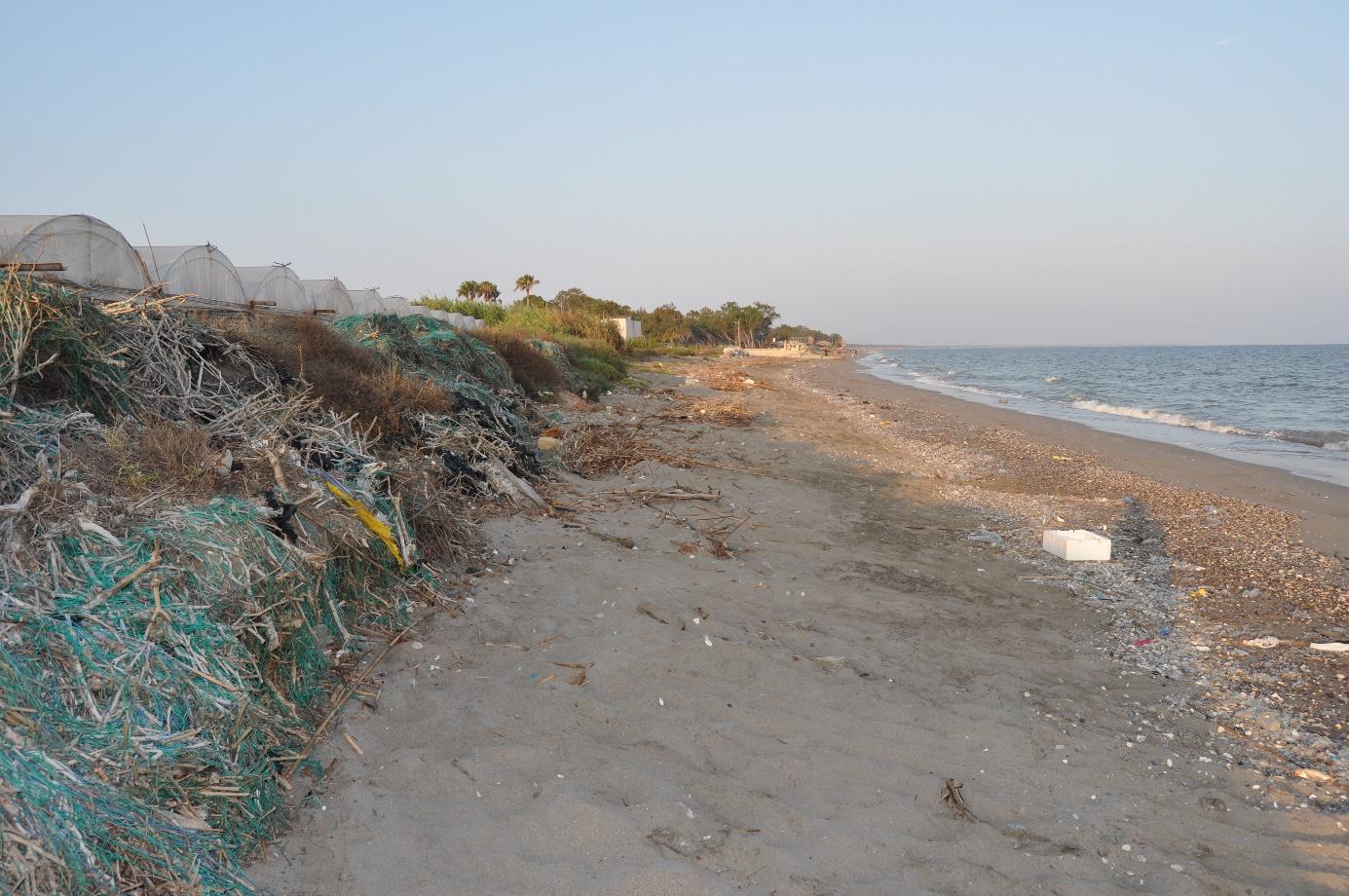
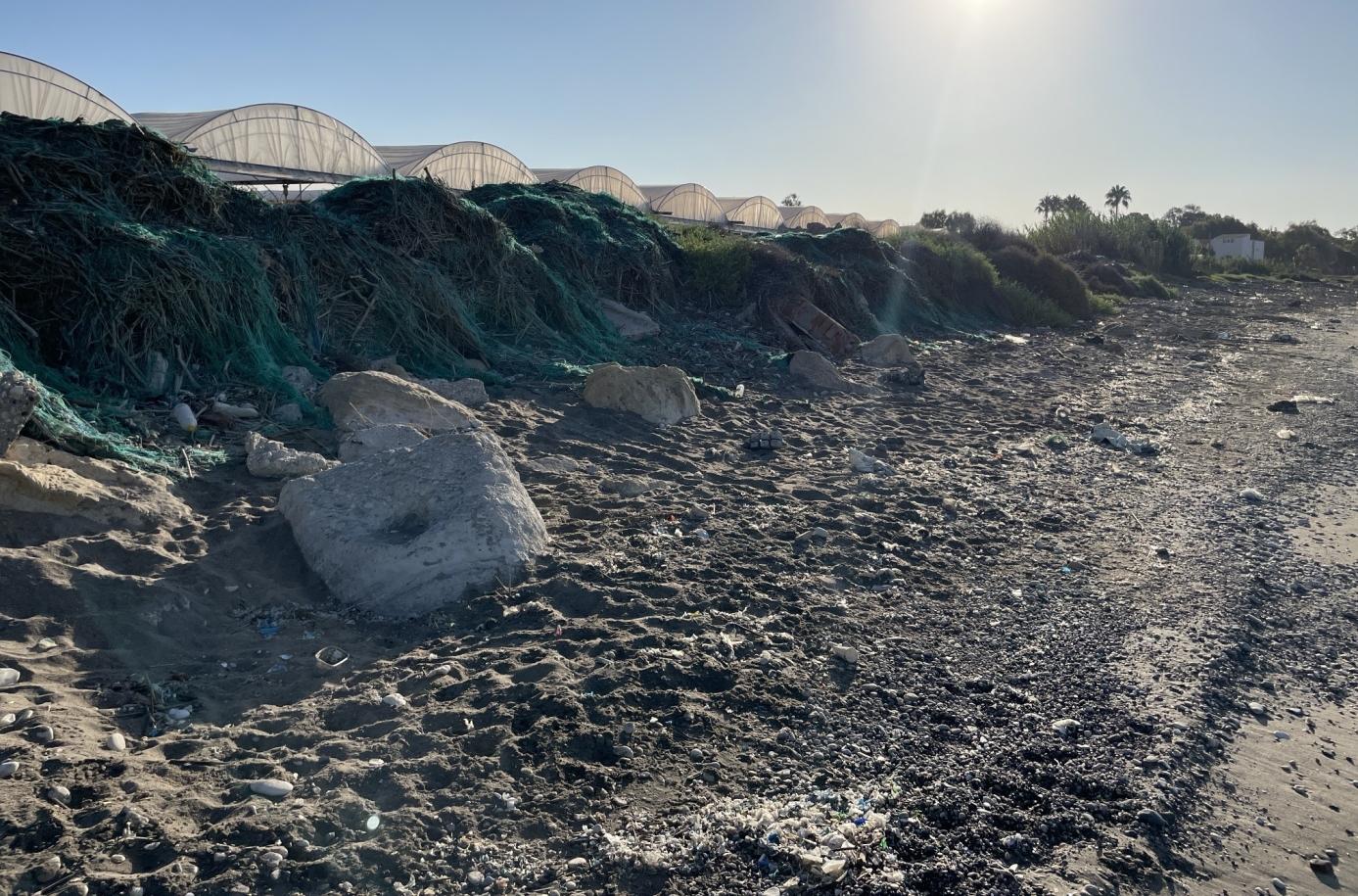
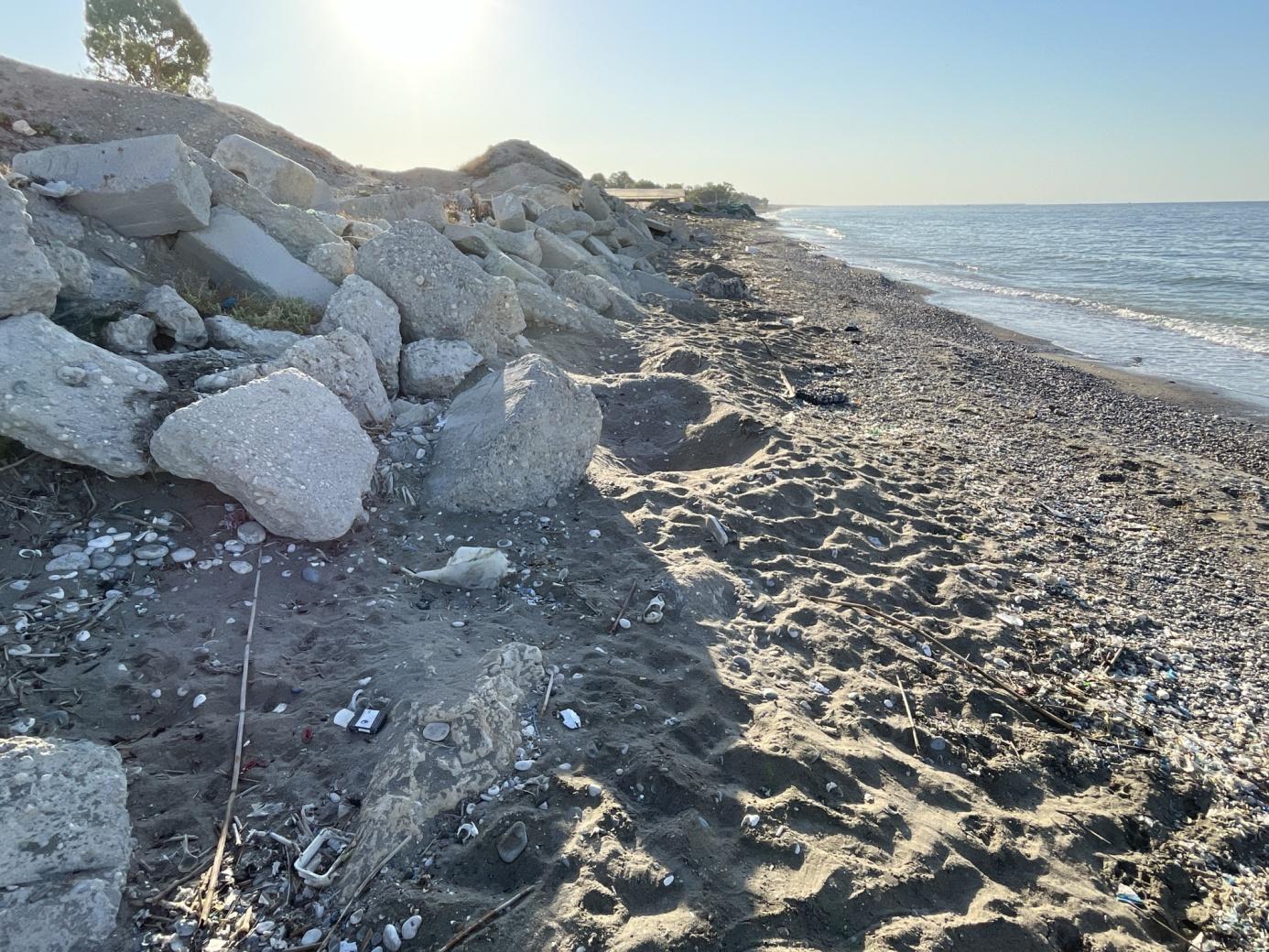
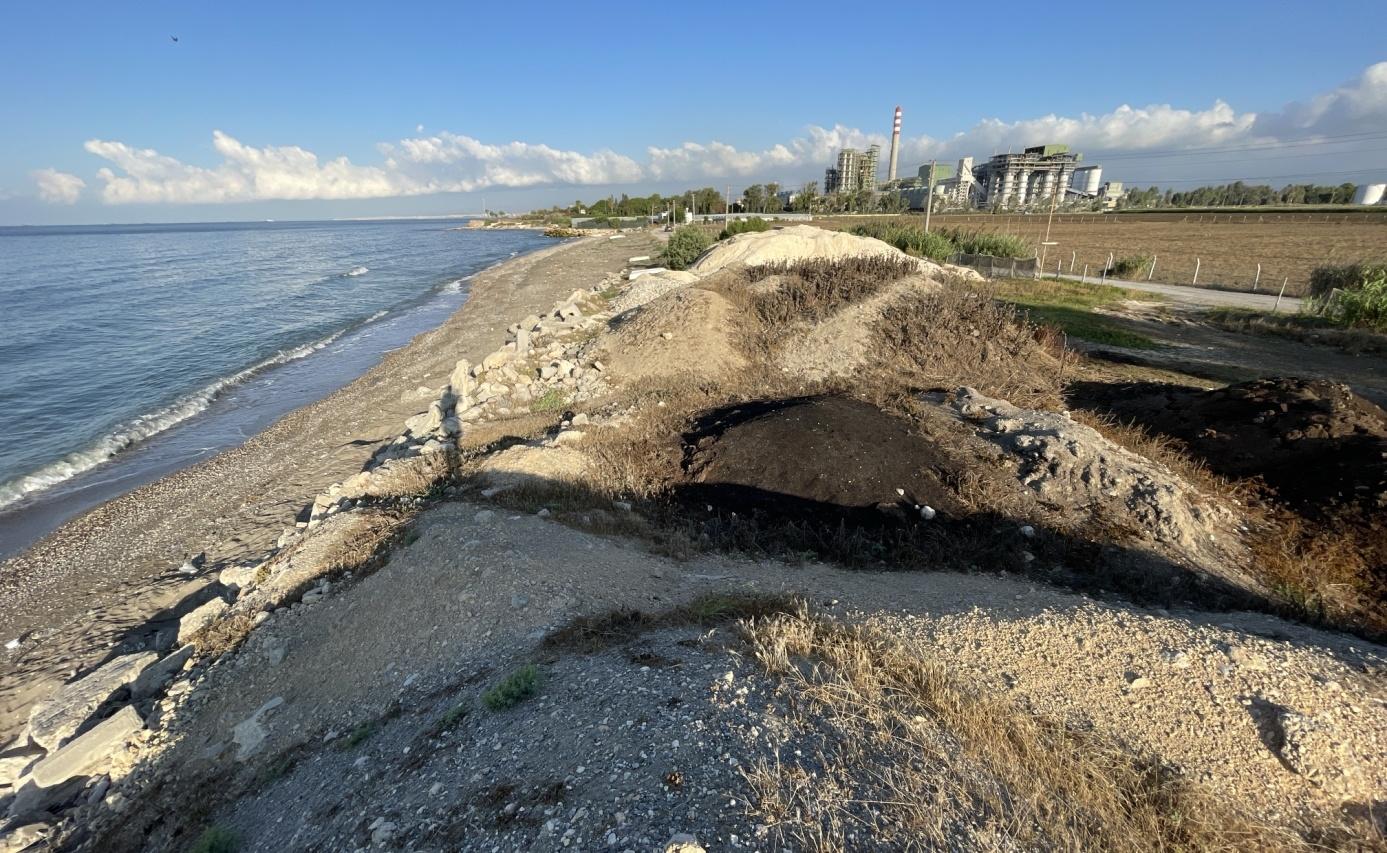
Figure 2. Observed that humus-rich soil (b) was added behind these barriers in previous years, which raises concerns that this may facilitate further expansion (a) of greenhouse operations in the future.
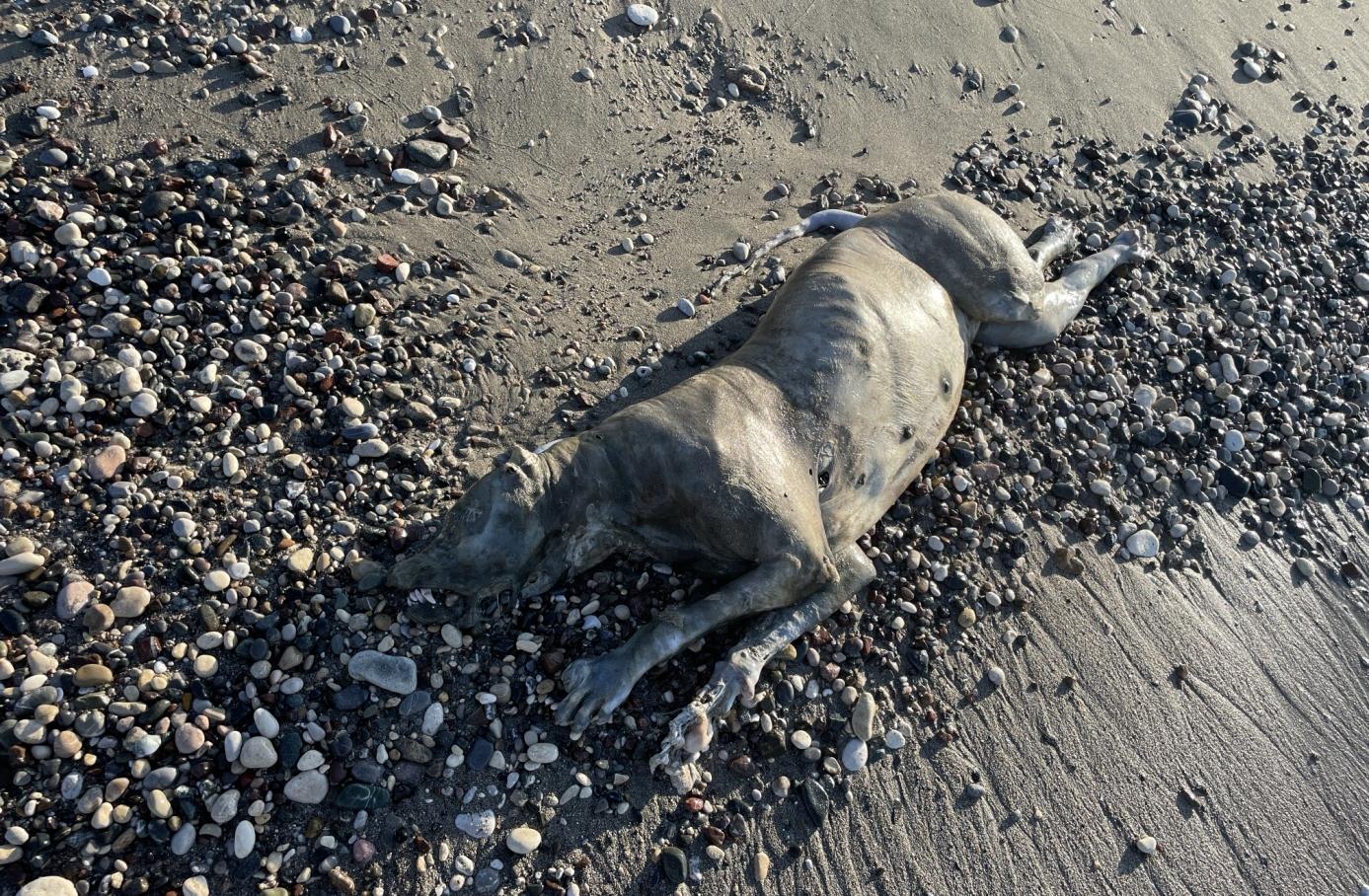
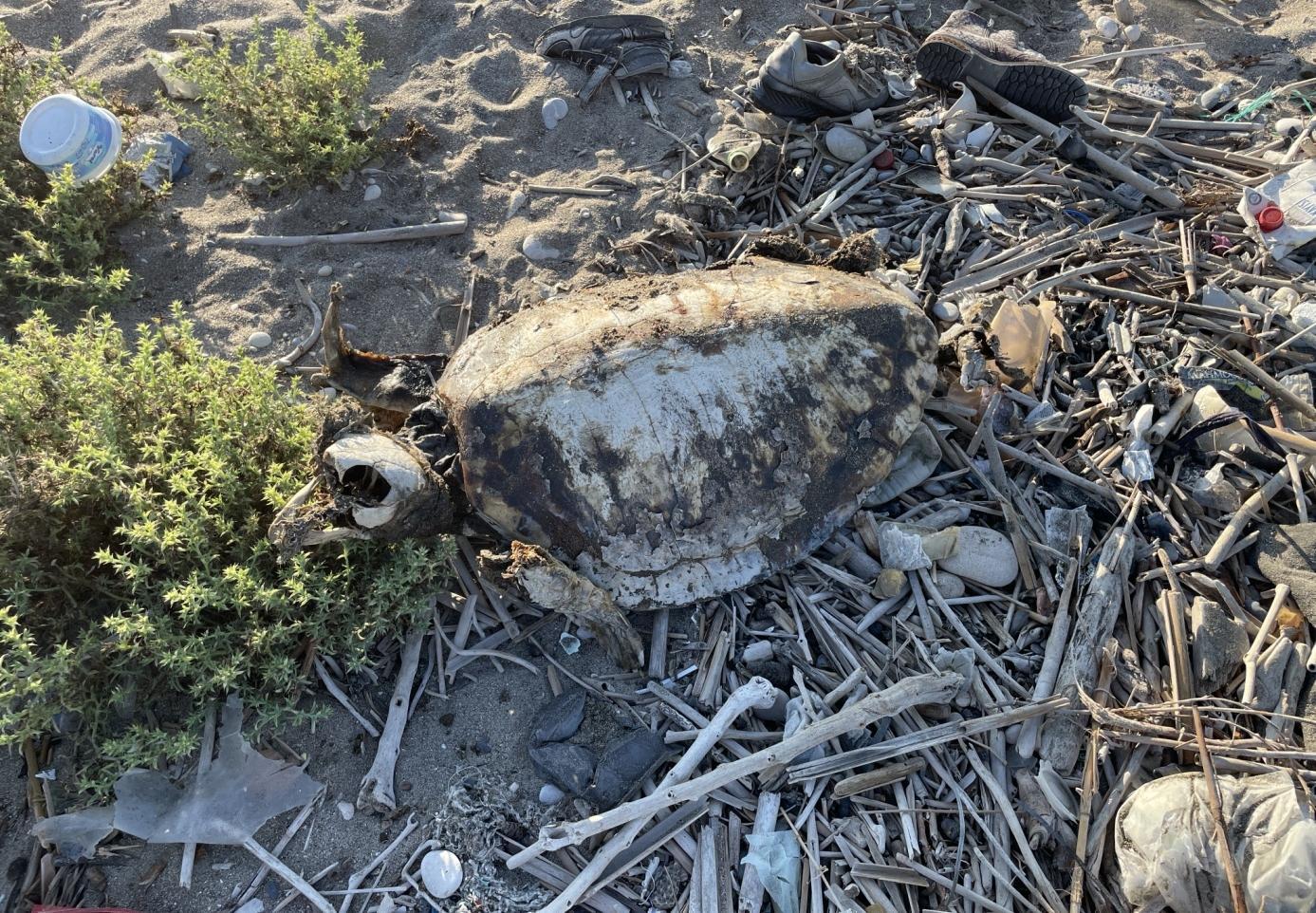
Figure 3. the cause of death could not be determined. Additionally, the carcass of a stray dog was also observed in the same area
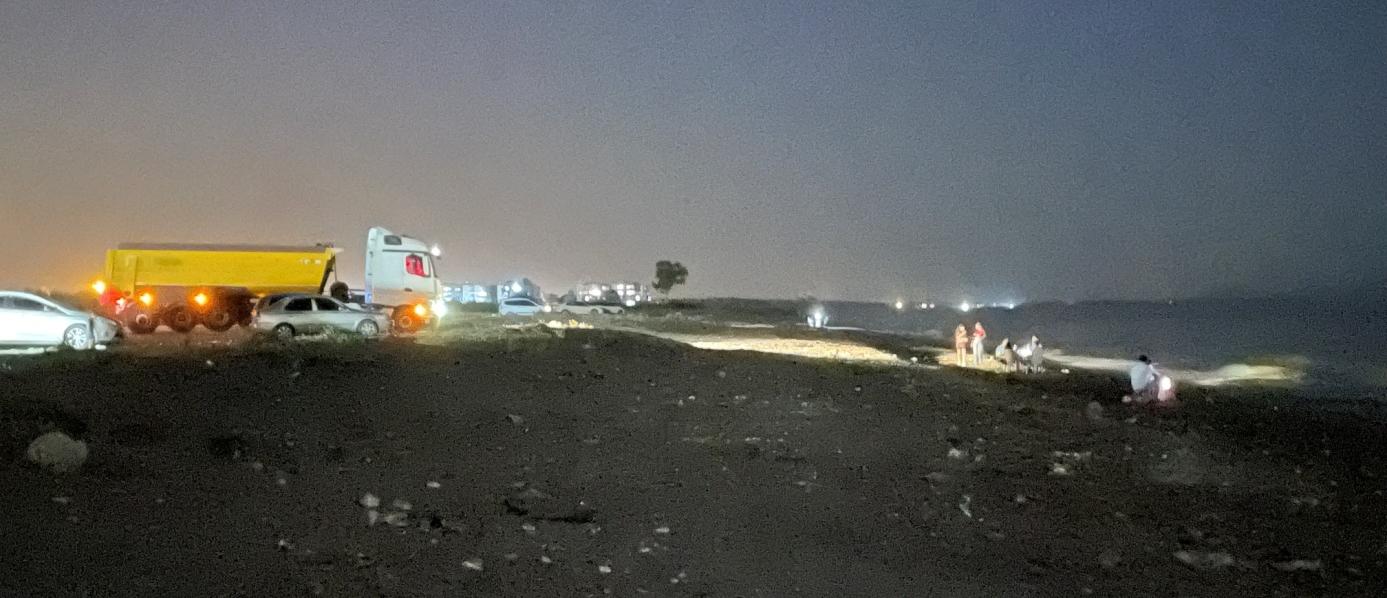
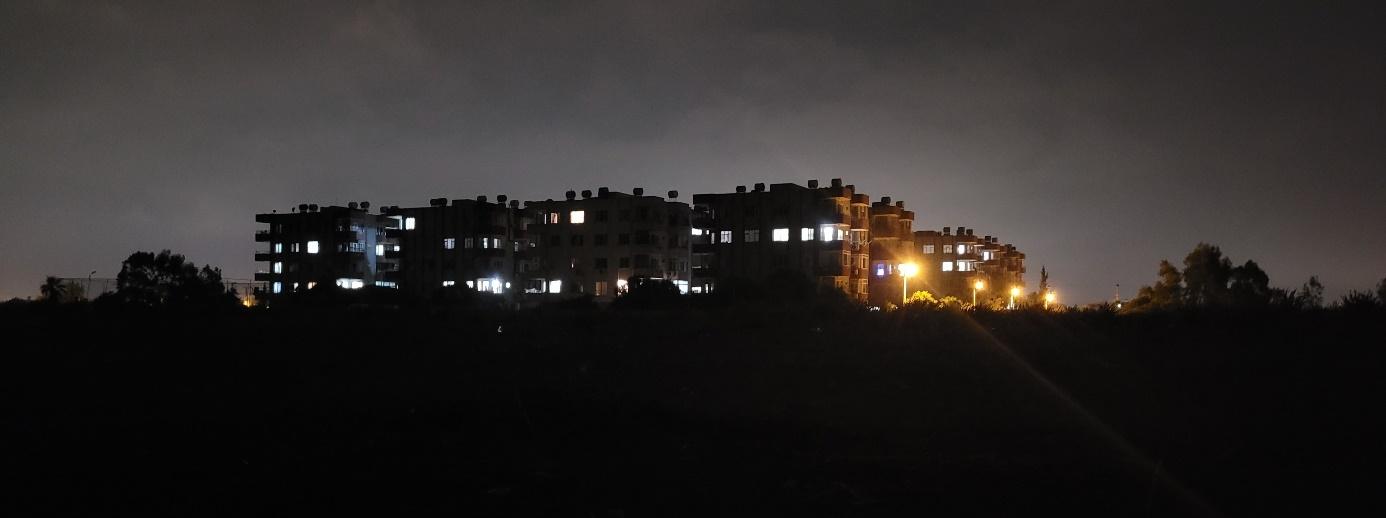
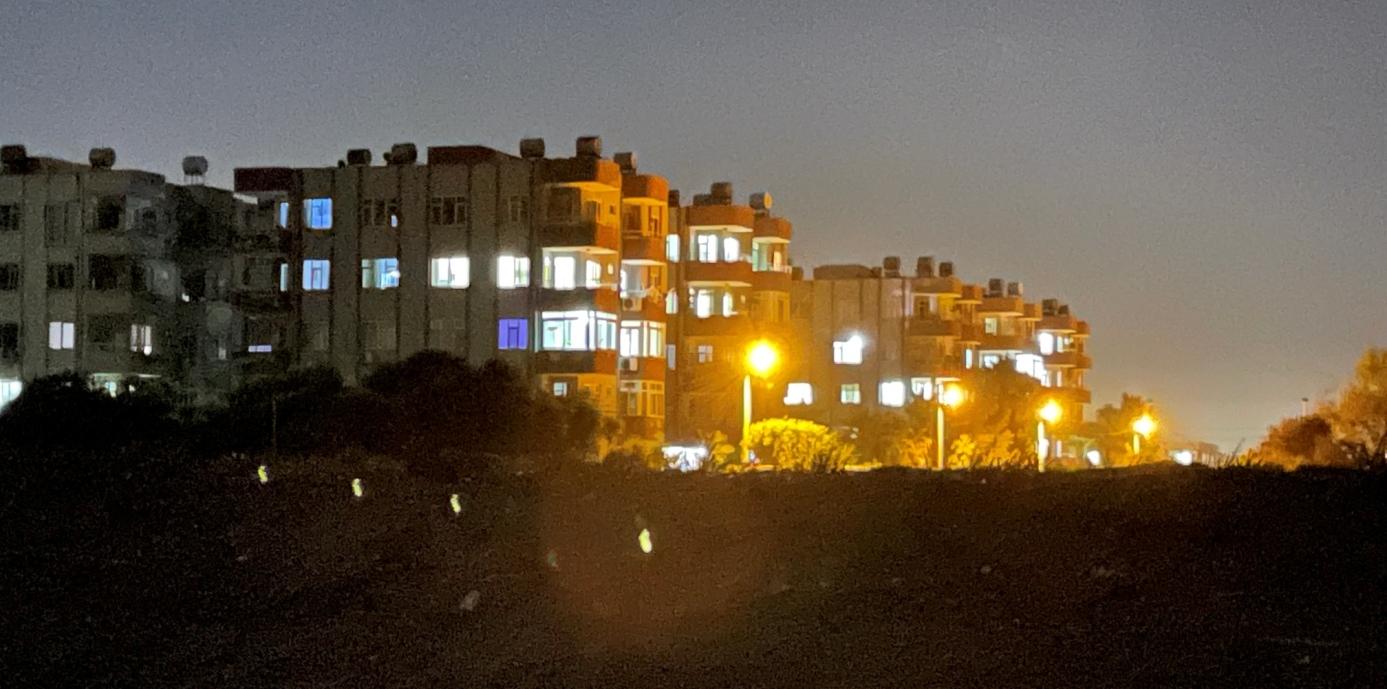


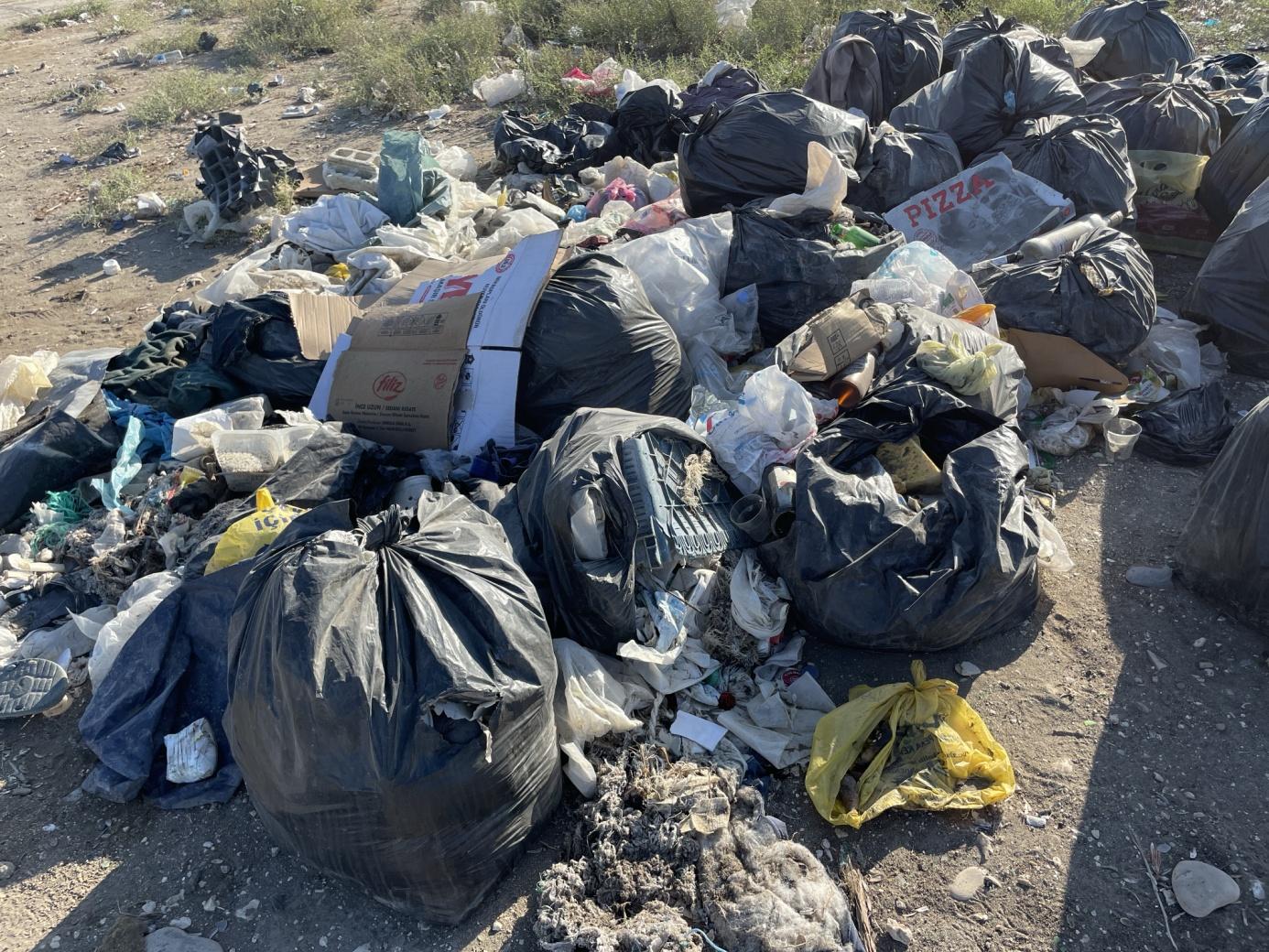
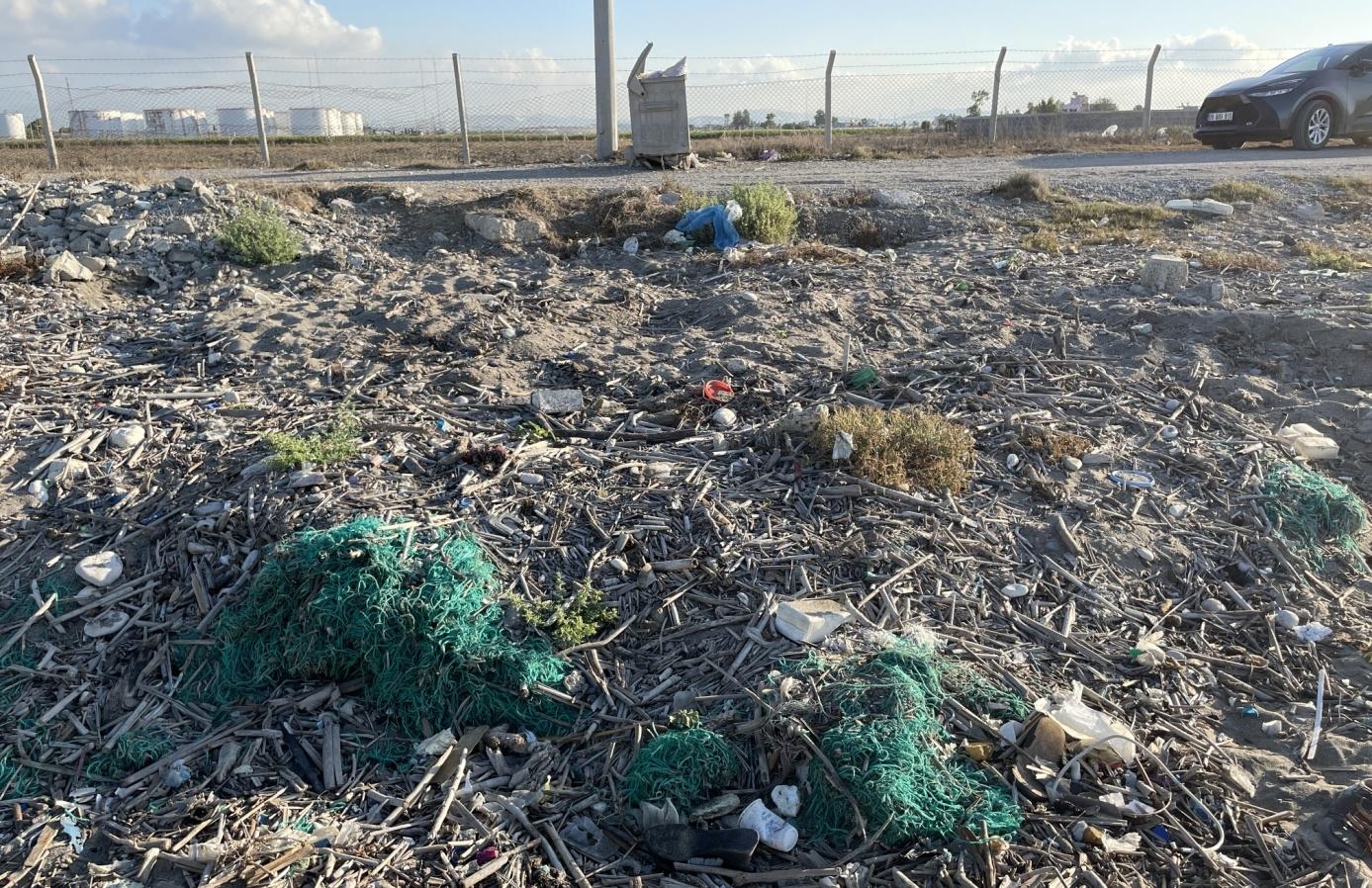
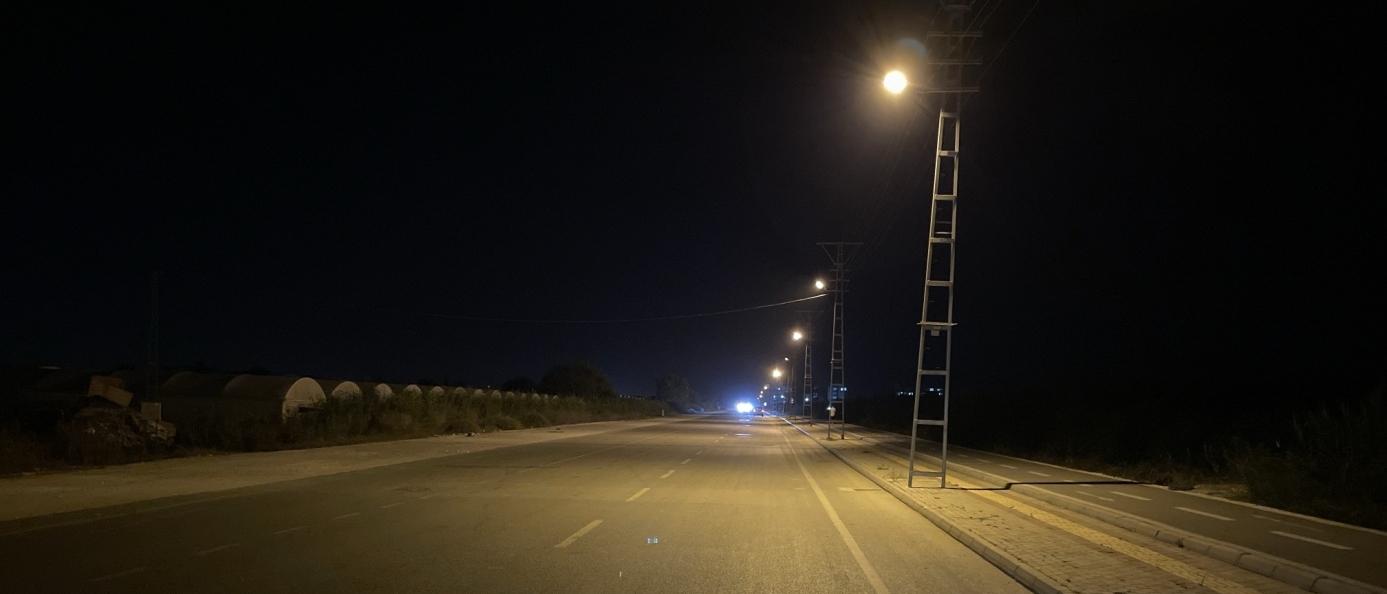
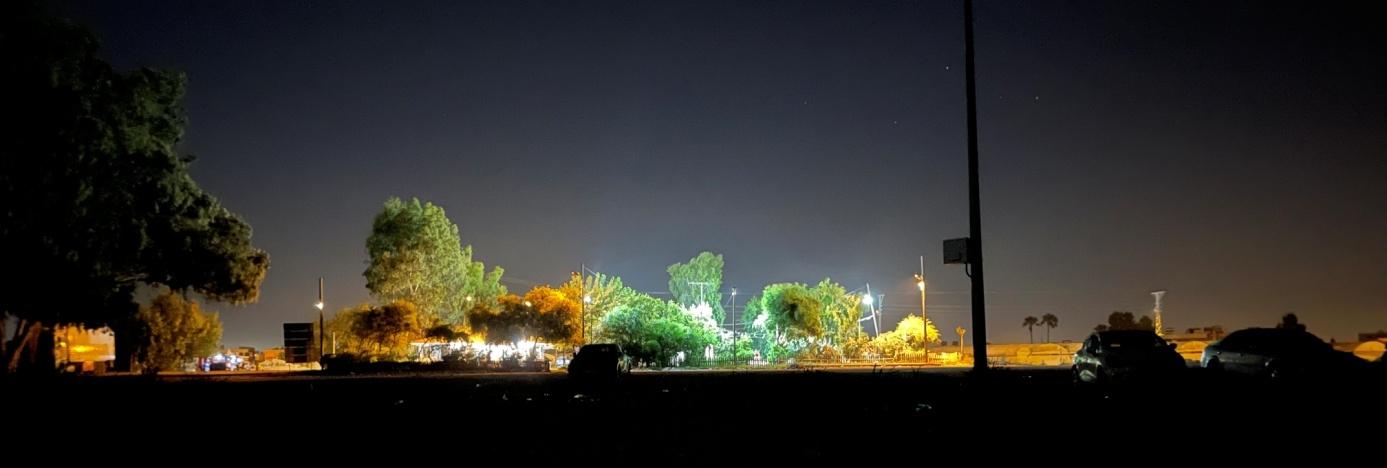


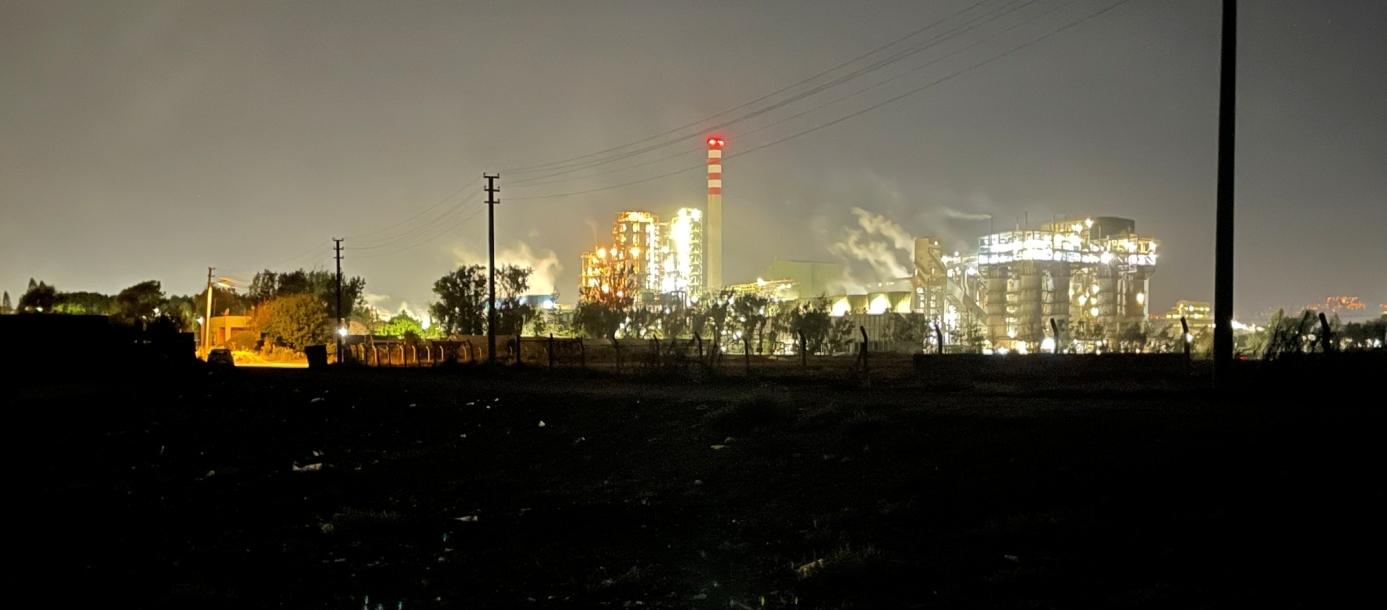
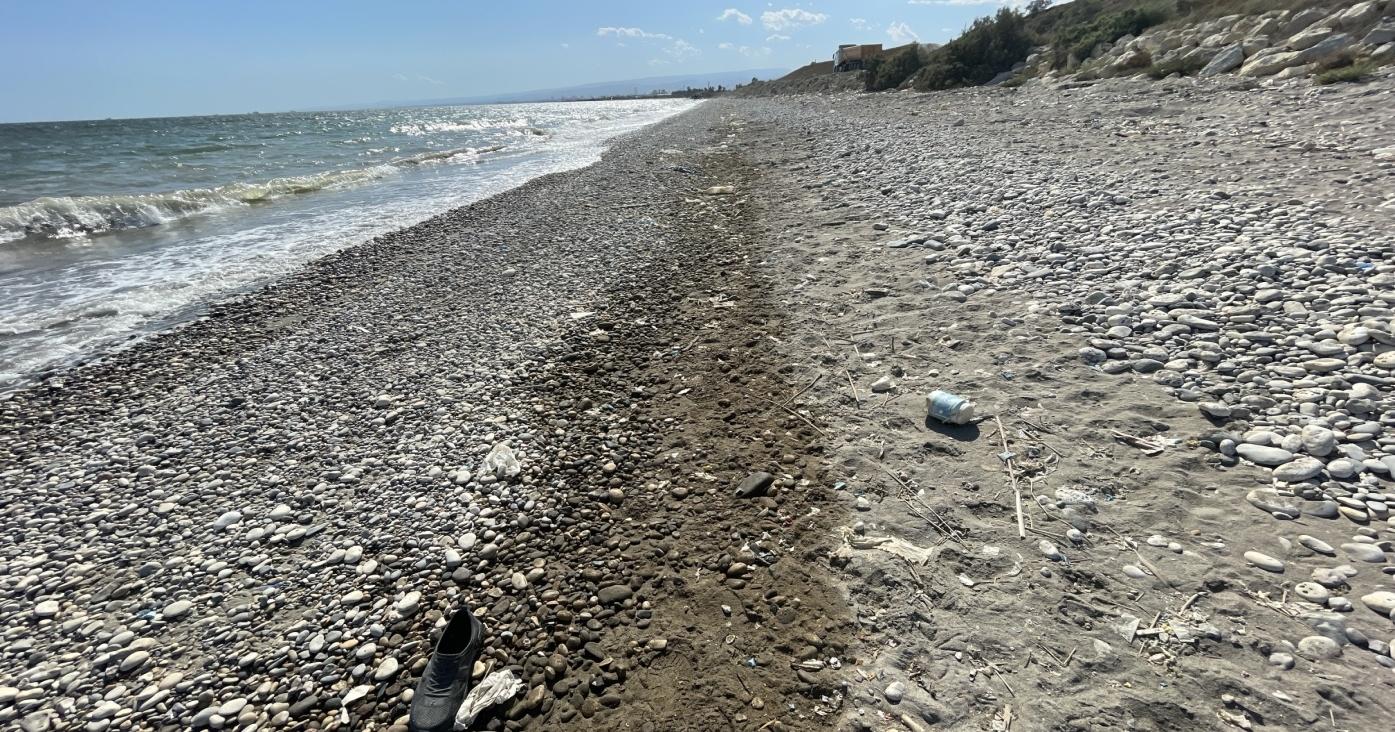
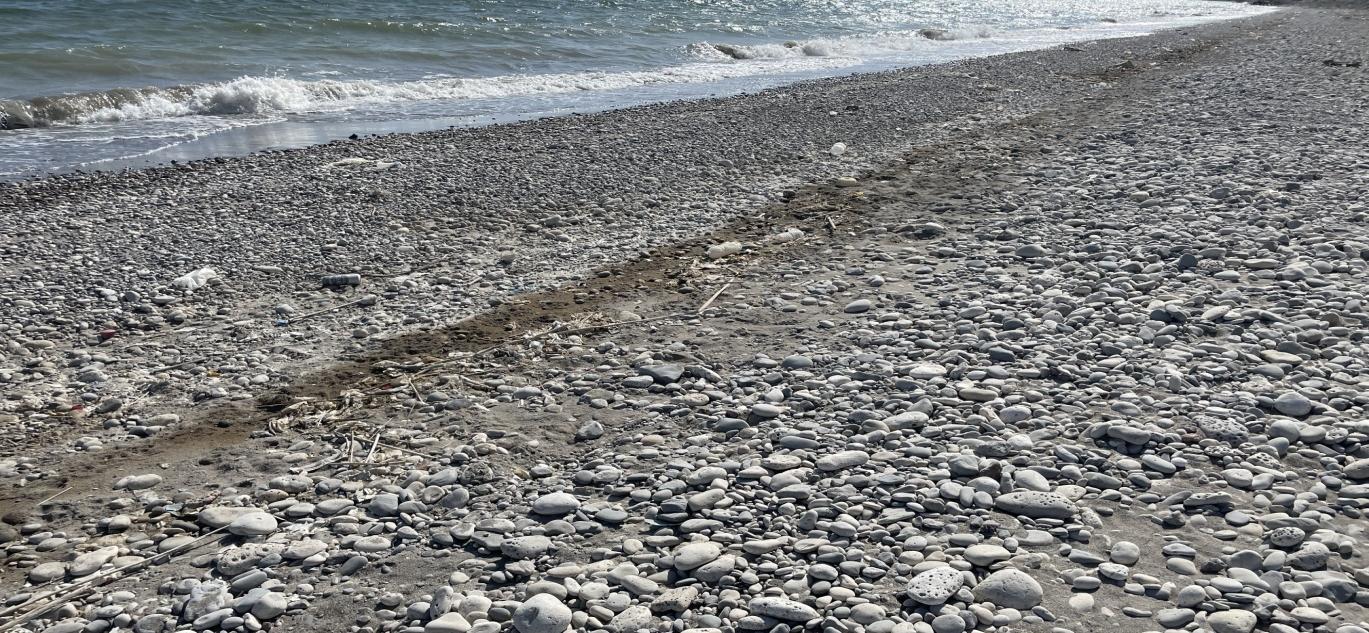
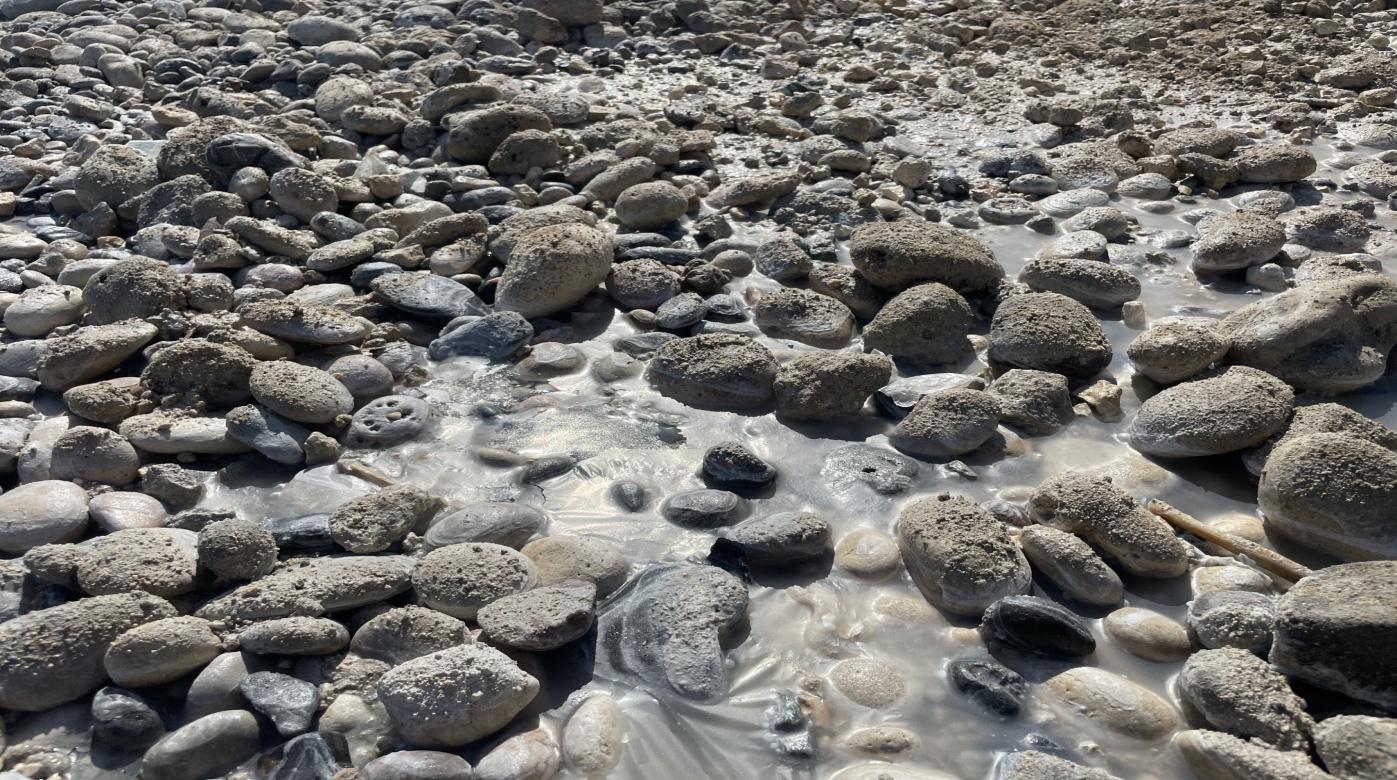
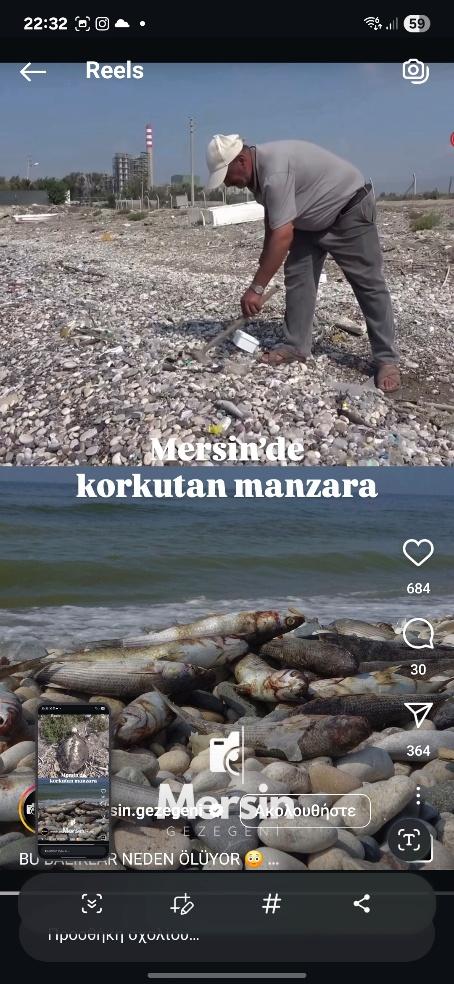
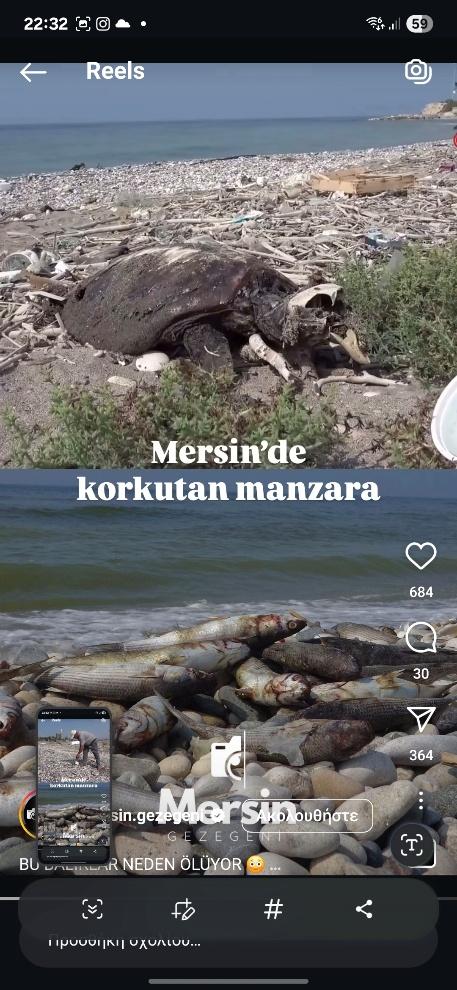
Figure 12.a) Soda residue seeped onto the beach. There is also video available. 12.b) and 12.c) Dead fish and dead sea turtle next to the soda chrome factory. Screenshots from Instagram post.
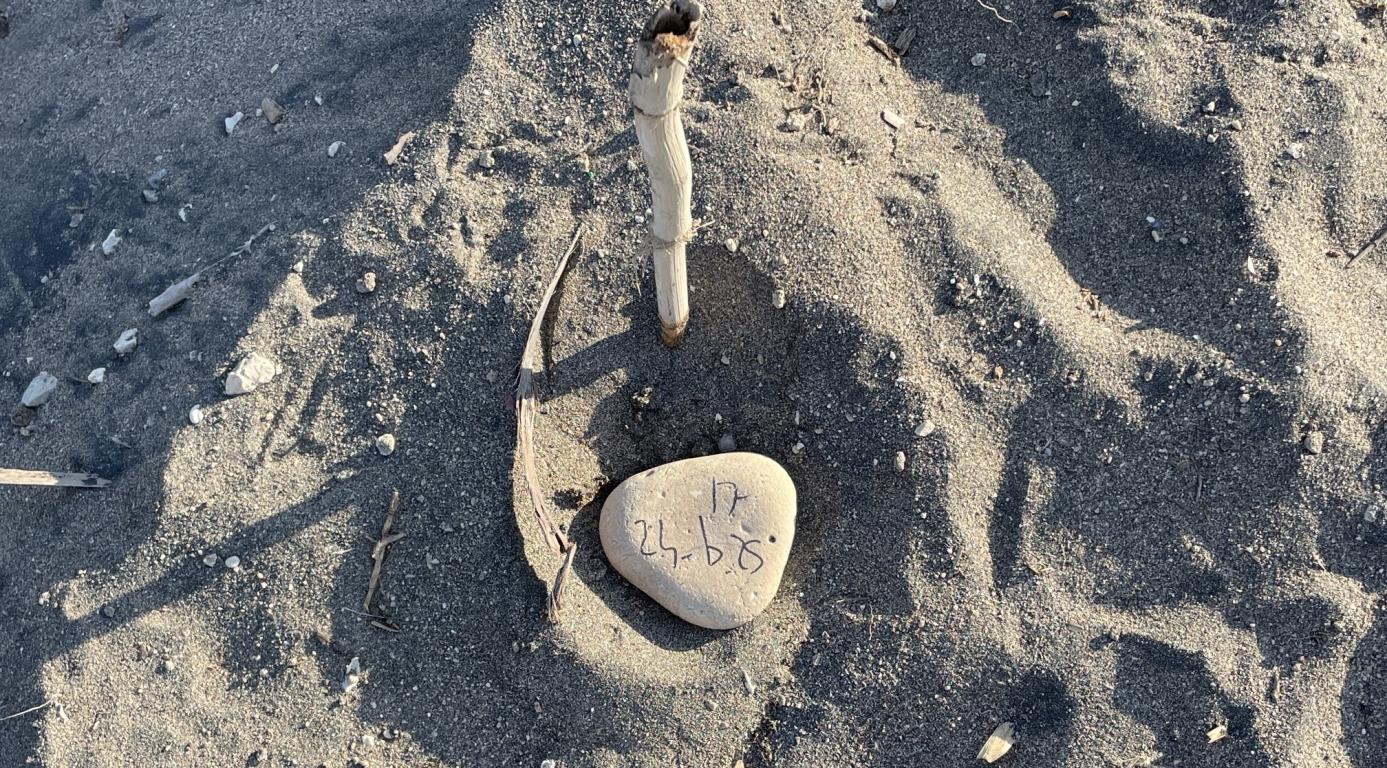
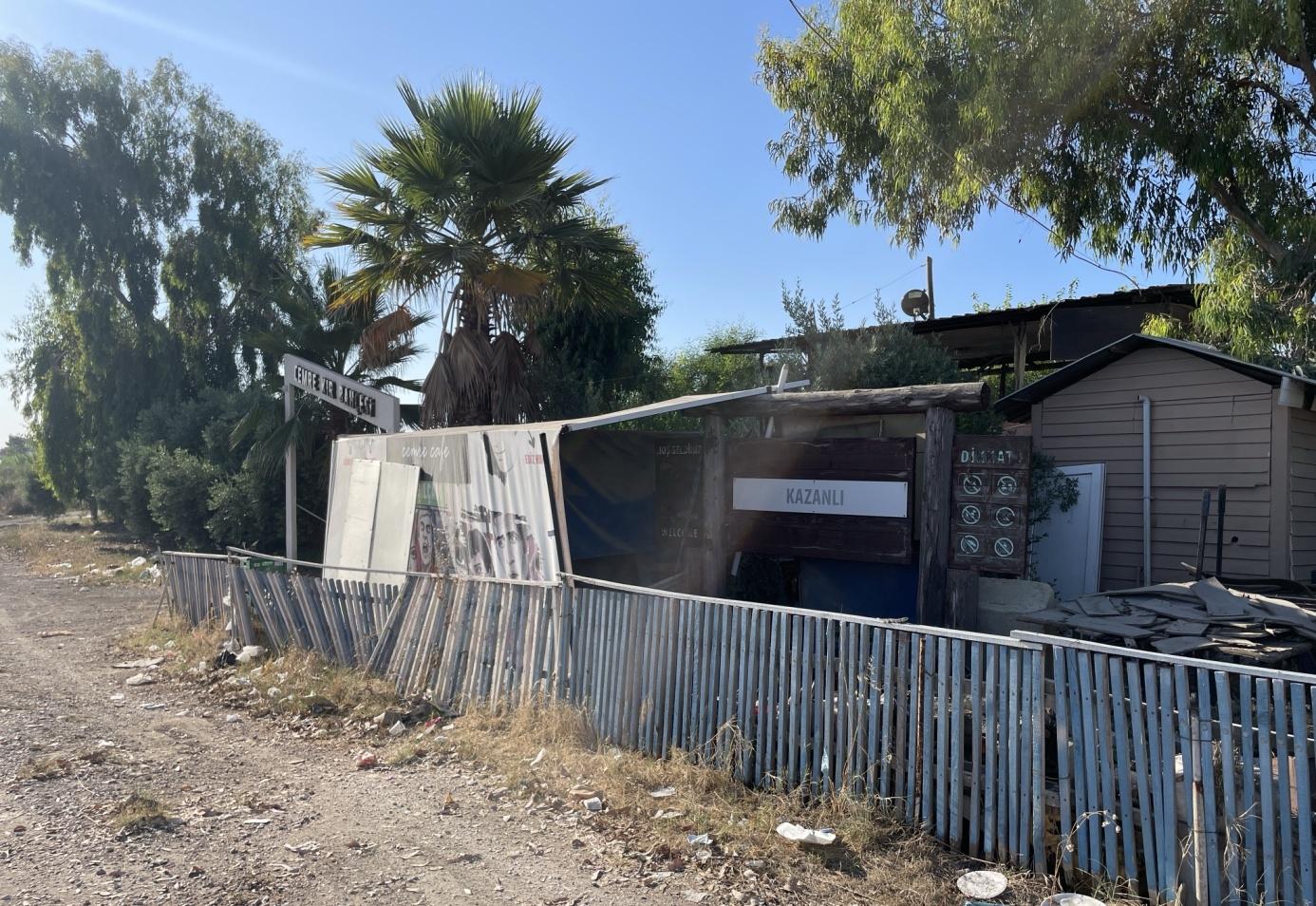
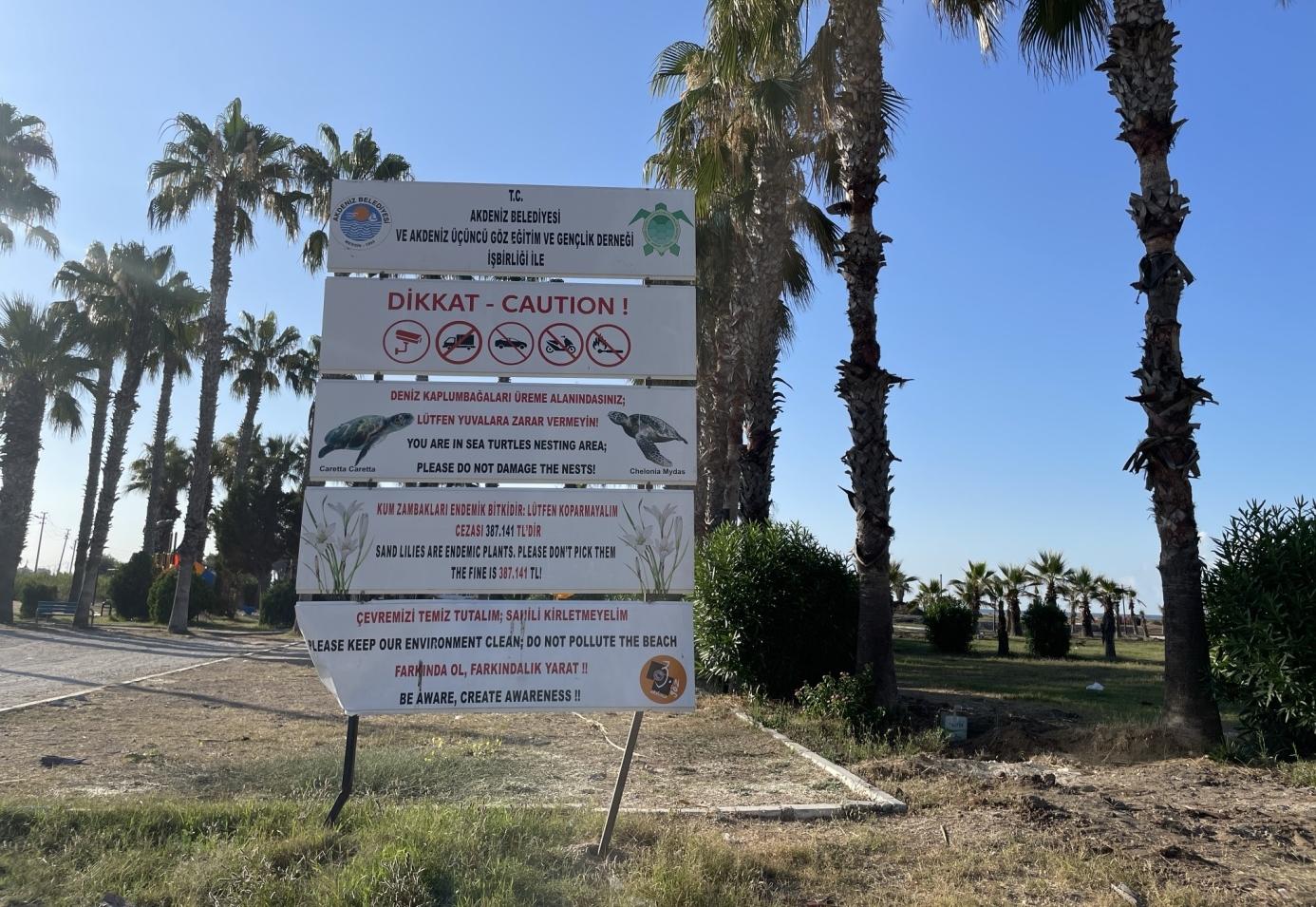
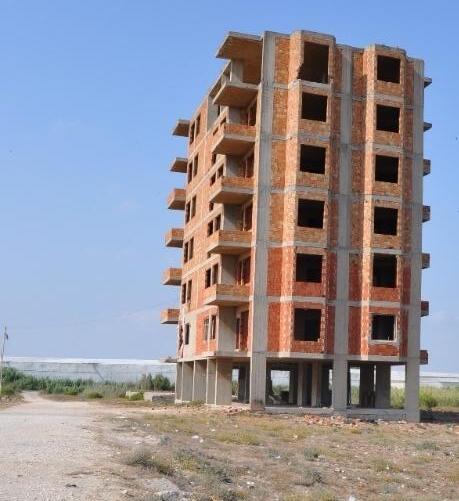
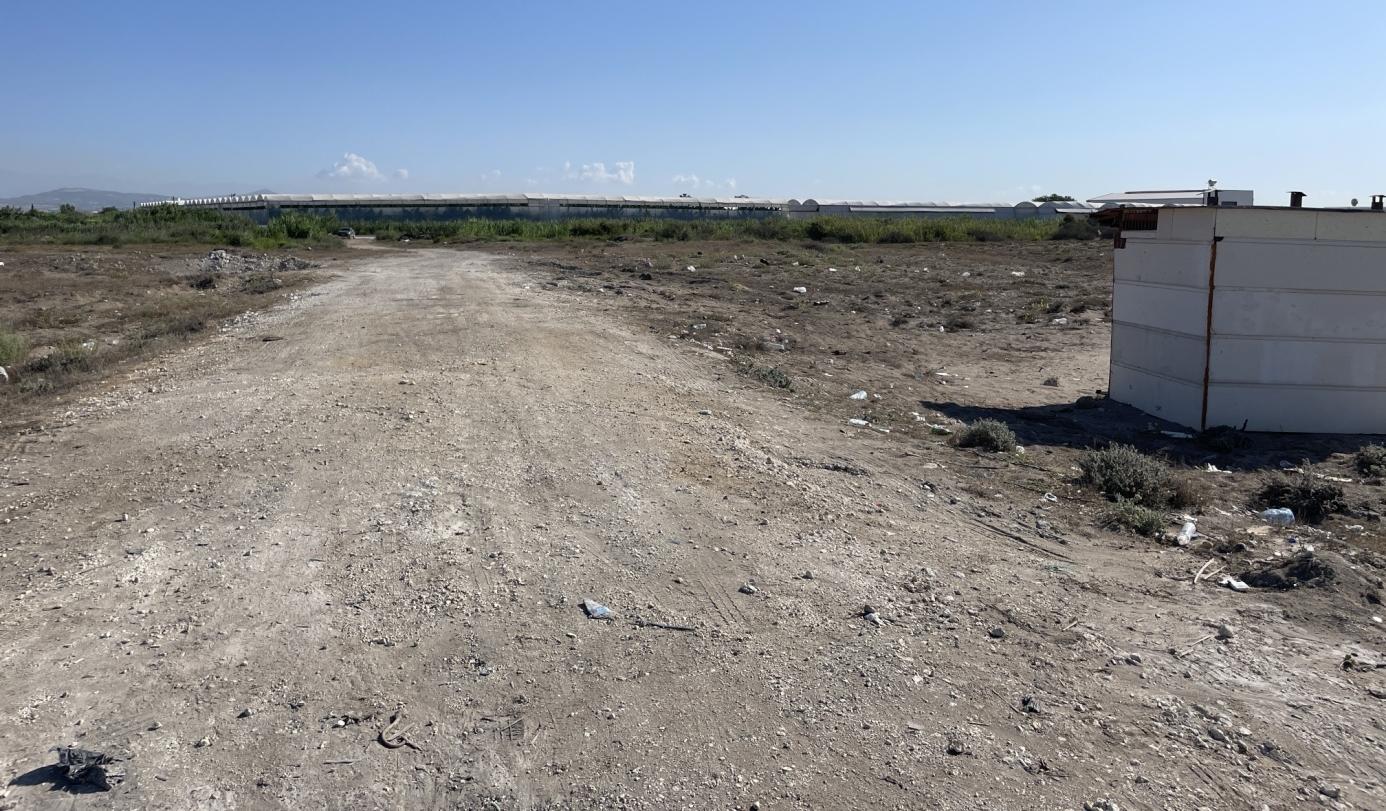
Figure 15. The abandoned building has been completely demolished and the debris cleared away (a) in 2023 (b) in July 2025
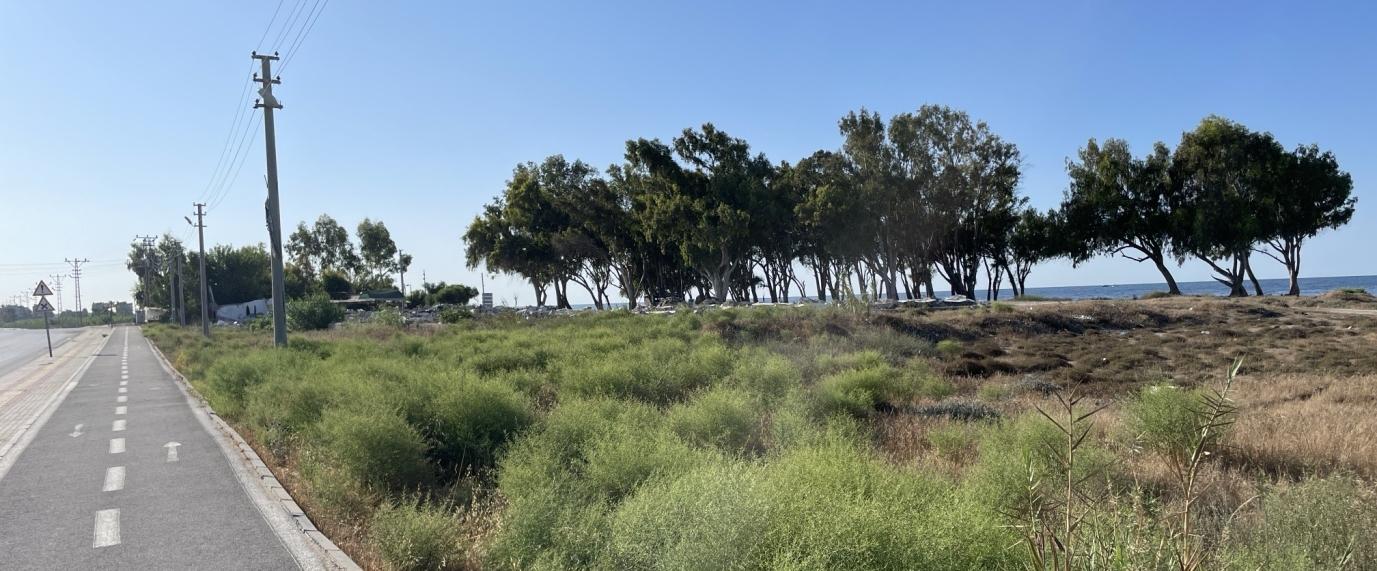
16. The demolished wedding hall and the remaining rubble (yellow ellipse).
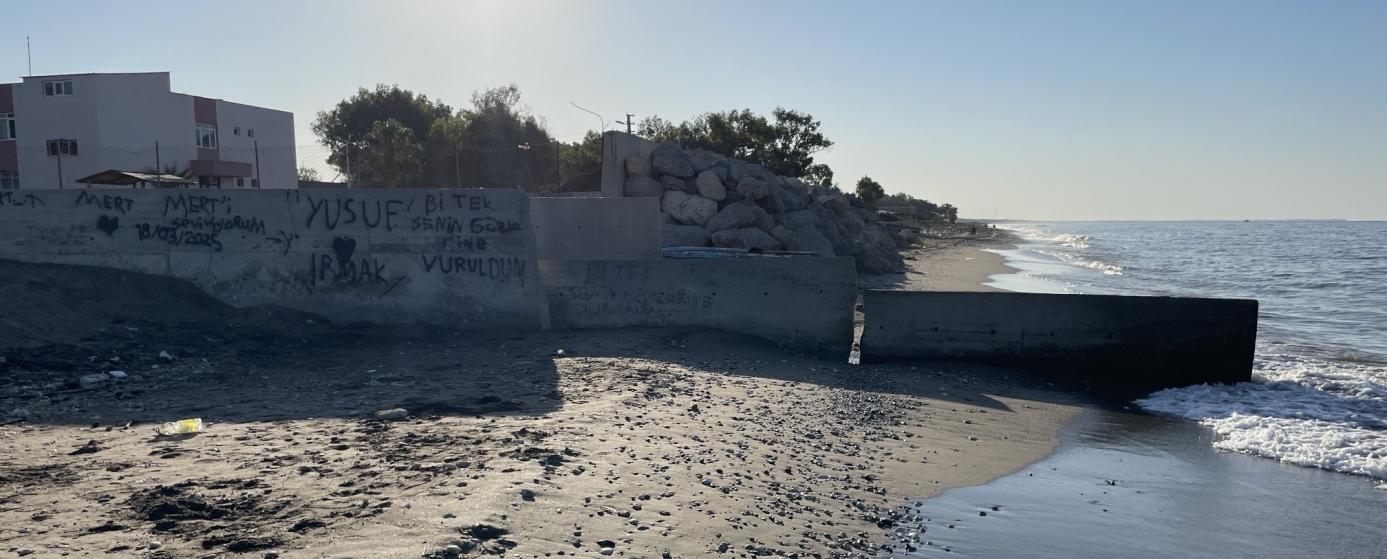
Figure 17. The concrete canal next to the school and the barriers protecting the school from waves.
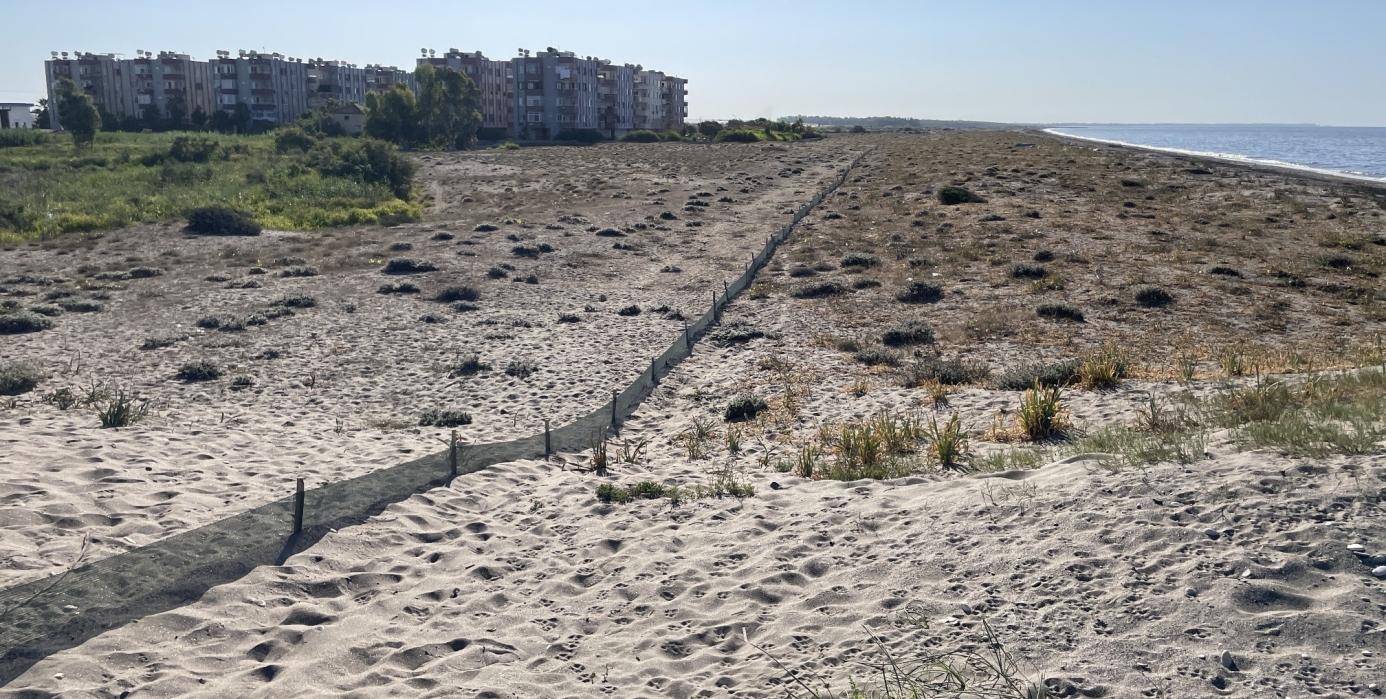
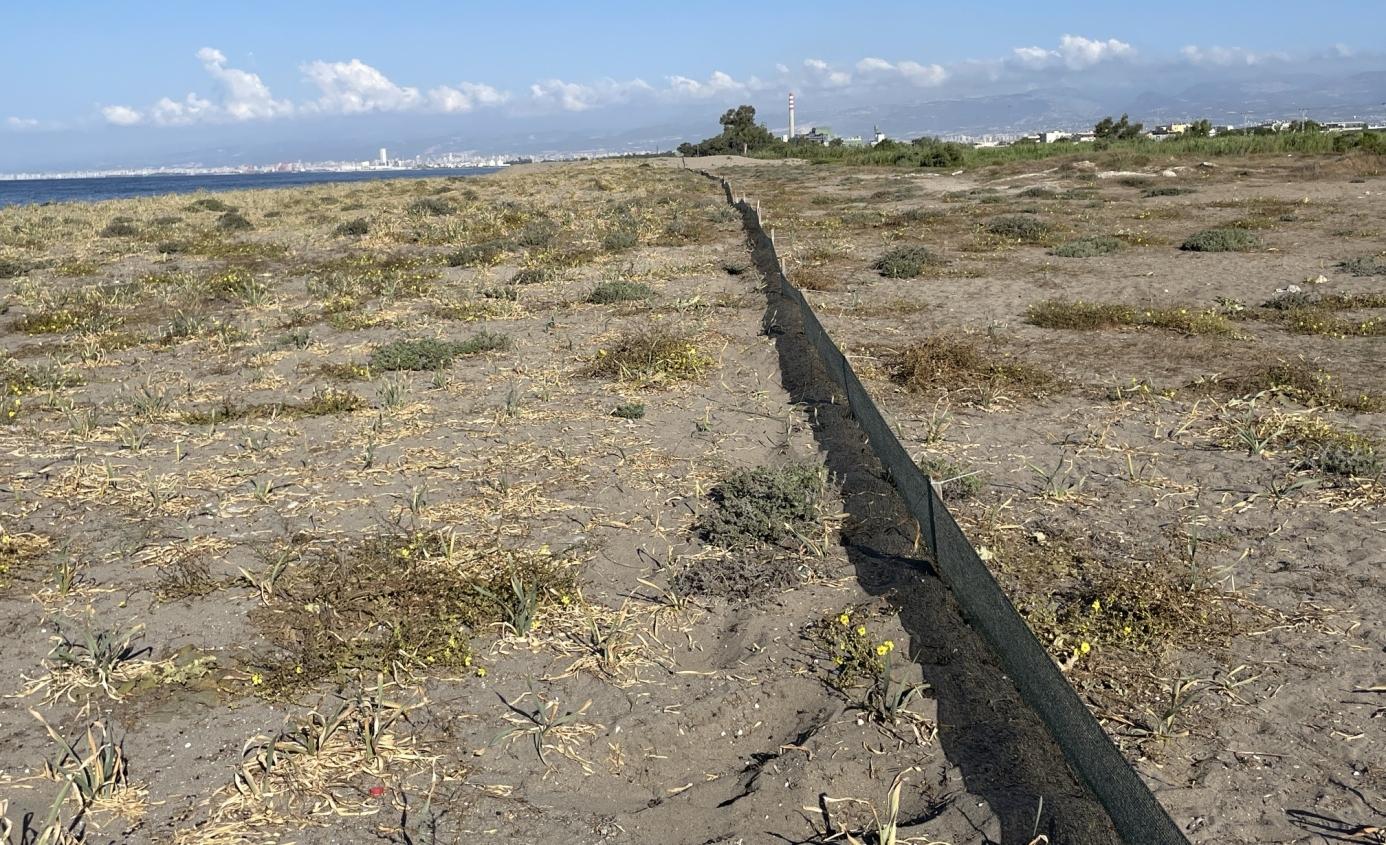
BACKGROUND SUMMARY
Green sea turtles, Chelonia mydas, are regarded as globally endangered.1 In the Mediterranean, researchers estimate that there are only 784 green adult female turtles nesting in the region, laying about 1.164-2.674 nests per year.2
The beach of Kazanlı in southern Turkey is one of the most important green turtle nesting areas in the Mediterranean. In 1988, it boasted the highest density of green turtle nesting in the Mediterranean.3 More recently, it was listed as among the top three most important green turtle nesting beach in the Mediterranean, together with Akyatan and Samandag beaches. In 1988-2006, 43-403 nests/year were recorded and 176–562 nests/year in 2006-2011.4 Part of Kazanlı nesting beach is nationally designated as a 1st Degree Natural ‘SIT’ Protected Area. The total length of the beach is 4.5 km (see map at the end of this annex). Surveys in the 1980’s identified a number of serious threats, which increased in subsequent years and although confirmed and reported by numerous researchers and conservationists, the responsible authorities failed to take action for several years. As a result, the nesting beach is subject to serious deterioration.
MEDASSET has been monitoring Kazanlı nesting beach and reporting on conservation problems since 1999. Main threats identified are: erosion, wastewater and toxic waste pollution, litter, sand extraction, light pollution, agriculture (greenhouses) on the rim of the nesting beach, coastal fishing during the nesting season, disturbance to the species during nesting and lack of public awareness. To the rear of the beach, sits the Kromsan Soda Chrome Factory that has deposited 1.5 million tons of hazardous toxic waste, directly next to the Kazanlı nesting beach. The waste has a high concentration of toxic chromium (Cr 3+/6+) compounds, and is a by-product of the factory’s activities in the 1990s. This mountain of waste is covered with a plastic sheet (in reaction to Recommendation No 95), directly nexttotheKazanlinestingbeach.Theremoval ofthishazardous wastefromthebeachisof highpriority for environmental and human health. In 2000 and 2001, MEDASSET alerted about the release of toxic waste into the sea off the nesting beach from the beachside factory. Seawater samples, which MEDASSET analysed, were found to contain chromium concentration 13,500 times higher than permitted levels. More than 23 green turtles were found dead. Discharges into the sea resulted in turtles emerging to nest with their body encrusted with white CaCO3
Bern Convention & the Kazanlı Case
The situation at Kazanlı has been reported several times in the Recommendations of the Bern Convention Standing Committee. In 1998 the Standing Committee adopted Recommendation No. 66 on the conservation status of some nesting beaches for marine turtles in Turkey, and urged the Government of Turkey to “takeurgent measures torestorethebeach,removetheadjacent greenhouses and the solid waste, particularly plastics; and resolve the pollution problem from the soda chrome factory”. To encourage conservation action, the Standing Committee opened a case file (No. 2000/1) at its 20th Meeting in 2000. Further concerns about inadequate protection of the sea turtle population and discharge of toxic waste into the sea, finally led to an on-the-spot appraisal mission in 2002, following which the Standing Committee issued a specific Recommendation No. 95 (2002) on the conservation of marine turtles in Kazanlı beach (Turkey), with 14 conservation measures. As some of the measures were implemented by the Turkish authorities, and considering that a better overall protection of the area had been achieved, despite MEDASSET’s call to maintain the case file open, the Standing Committee at its 24th Meeting in 2004 provisionally closed the file, requesting that the Turkish Government continues to report on progress on the implementation of the 14 recommended conservation measures. However, the Turkish Government did not report on the conservation status of Kazanlı in 2005, and no delegation attended the 2005 Standing Committee Meeting. In 2006, the Turkish Government submitted a brief report, but again did not send a delegate to the Standing Committee meeting. In 2007, the issue was discussed at the Standing Committee, which decided not to re-open a file, but to request that the Turkish Authorities submit a report in 2008. At the 2008 Standing Committee
1 IUCN Red List of Threatened Species, www.iucnredlist.org
2 Hochscheid et al. (2018). Sea Turtles in the Mediterranean Region: MTSG Annual Regional Report.
3 Baran & Kasparek 1989, Yerli & Demirayak 1996
4 Kasparek et al. 2001, Casale & Margaritoulis2010, Turkozan et al. 2015
Meeting, the Turkish Government reported on progress to implement measures listed under Recommendation No. 95 and further informed that the Soda Chrome Factory’s plan to set up a landfill site had been delayed, and that the solid waste treatment would commence in July 2009, while the operation of the landfill was set to begin in November 2009. MEDASSET called on the Government of Turkey, to start implementing without delay plans to put the hazardous waste in a safe location, far from the green turtle nesting beach and the sea.
According to the March 2009 Bureau Meeting Report, the Turkish authorities reaffirmed their intention to remove the hazardous waste from Kazanlı Beach, but notified that “it would take some time”. They confirmed that the construction of the waste neutralisation facility was underway and was expected to be completed as planned. EIA studies were being carried out for the waste storage site. According to the report submitted by the Government to the 2009 Standing Committee Meeting, the waste disposal facility was to be finished by October 2009. At the 2009 Meeting, the delegate of Turkey reported on progress on the implementation of Recommendation No. 95, and informed that the removal of the toxic waste was to start soon, an investment had been made to establish a neutralization plant, and that waste removal will take eight or ten years. MEDASSET welcomed progress made, and highlighted that together with the toxic waste management several points remain unsolved, such as the severe coastal erosion which requires more drastic measures by the authorities.
During the 30th Standing Committee Meeting in 2010, though Kazanlı was not on the Meeting’s agenda, and following MEDASSET’s intervention, the Turkish delegate briefly informed that nest monitoring continued and that the toxic waste neutralisation facility was established within the chromium factory’s grounds and that the process has started (see 2010 MEDASSET Announcement). Two hundred thousand tons of chromium had been neutralised and were kept within the Factory’s grounds, until transferred to a landfill site, which had not yet been defined. MEDASSET called upon the Turkish Government to continue reporting regularly to the Convention on all issues concerning Kazanlı, especially on the toxic waste management and erosion problems. The request was reiterated via email to the Secretariat in 2011 and through an intervention during the 2012 Standing Committee. To our knowledge, no government report had been submitted since 2009.
At the 2013 Standing Committee Meeting, the Turkish delegate informed about measures, including: awareness raisingtargetedat visitors; localvolunteer beach cleaningactivities;light screening by the municipality; seasonal vehicular traffic bans; chemical analysis showing waste compounds from the chromium factory to be well below standard values. Illegal buildings and greenhouses remain on the beach. No information was provided on the remaining measures, such as the severe beach erosion problem. Information reported on the removal of the toxic waste was the same as reported in 2010, therefore, there seemed to be no tangible progress (for details see T- PVS/Files (2014) 58).
In 2014, the Turkish delegate’s oral statement at the Standing Committee Meeting addressed all measuresunderRecommendationNo.95.MEDASSETwelcomed the continuationofawarenessraising, nest monitoring, efforts to reduce agrochemical pollution, municipal sewage and industrial wastewater discharge monitoring. A single beach cleanup before the nesting season was reported. The report was unclear regarding whether light pollution reduction measures were indeed taken or if there were only discussions with the municipality and factory about this issue. The 1.5 million tons of solid toxic waste remain next to the nesting beach, there was no update on the amount of waste neutralised during 20112014 and the only positive news was that the permanent landfill for the neutralised waste should start to operate in 2015, as the EIA was completed in 2014. Regrettably, removal of greenhouses and illegal buildings had not progressed, pending an ongoing shoreline delimitation court process. Lastly, there was a complete lack of measures to monitor or manage erosion. As announced in the delegate’s oral intervention, in Dec. 2014 the Ministry made a study visit to ARCHELON (Athens, Greece) regarding the management of nesting sites. During the visit, MEDASSET participated in a discussion session on beach erosion and invited an expert geologist who, after noting the severe erosion in Kazanlı using satellite imagery, identified the river dams in the surrounding area as the possible key source (as has been suggested in MEDASSET’s reports) and provided some general guidance on potential measures.
At the 2015 Standing Committee meeting, the Turkish delegate presented a report on the 14 points of Recommendation No. 95 (2002): preliminary work was underway regarding a beach erosion project
and 46.593 tons of the neutralised chemical waste stored in a temporary landfill facility in the factory, had been transferred to a permanent landfill (for details see T- PVS/Files (2015) 49).
At the 2017 Standing Committee meeting, the Turkish delegate informed that the beach erosion project was not launched and no action has been taken to deal with the erosion problem, and that 183 thousand tons out of the 1.5 million tons (only 12.2%) of the neutralised chemical waste stored in the temporary facilities had been transferred to a permanent landfill. MEDASSET’s survey and report confirmed that the huge amount of toxic waste remains next to the nesting beach and erosion is accelerating at an alarming speed. Despite government reports, light pollution is still a major problem, abandoned buildings and greenhouses are still present on the beach, summerhouses and a wedding hall continue to operate in the nesting area, and information signs are severely lacking.
At the 2019 Standing Committee meeting, MEDASSET reported the lack of implementation of Recommendation No 95 to tackle conservation problems such as coastal erosion, litter, sand extraction, light pollution, coastal fishing during the nesting season and lack of public awareness. the According to the Government report “the amount of chromium neutralized in this facility is around 800.000 tons.” MEDASSET noted the slow progress in removing the toxic waste, despite government commitments that the process would be completed by 2019. The Standing Committee urged the Turkish authorities to implement all points of Recommendation No. 95 (2002) and requested an updated report in 2021.
At the 2021 Standing Committee meeting, MEDASSET reported the lack of implementation of Recommendation No 95 to tackle conservation problems such as coastal erosion, litter, sand extraction, light pollution, coastal fishing during the nesting season and lack of public awareness. The Standing Committee took note of the updated information provided by both parties and thanked the Turkish authorities and MEDASSET for their presentations. The Committee took note of the complainant’s concerns that progress in the implementation of Recommendation No. 95 (2002) was lacking, especially concerning the erosion of the nesting beach and T-PVS(2021)MISC - 22 - building removal. The Committee expressed its regret that the project in cooperation with the METU Marine Sciences Institute on the factors causing coastal erosion, due to lack of funds, could not be implemented. The Standing Committee urged the Turkish authorities to implement all conditions of Recommendation No. 95 (2002) and to accelerate the neutralisation process of the remaining hazardous wastes, hoping that in 2023 all waste would be neutralised. Both parties were invited to submit updated reports in two years.
At the 2023 Standing Committee meeting, MEDASSET reported the continued lack of implementation of Recommendation No 95 to tackle conservation problems such as coastal erosion, litter, sand extraction, light pollution, coastal fishing during the nesting season and lack of public awareness. The Standing Committee took note of the reports of both parties, thanked MEDASSET, the complainant organization, for its oral presentation, but regretted the lack of participation of the Turkish authorities in the discussion. It noted only limited progress in the implementation of Recommendation No. 95 (2002) and remained very preoccupied by the situation of sea turtles at Kazanlı beach. More generally, it requested full implementation of Recommendation No. 95 (2002) with no further delay, especially to implement the erosion control and the toxic waste removal. It referred to its newly adopted guidance tool on the Conservation of sea turtles nesting sites and encouraged both parties to make full use of it in their work. It invited both parties to report to the Bureau in Autumn 2025 ahead of the following Standing Committee meeting.
ANNEX 2: REFERENCES
Baran, I. & M. Kasparek. 1989. Marine turtles Turkey. Status survey 1988 and recommendations for conservation and management. WWF. Heidelberg. ISBN 3-925064-07-9
Broderick, A.C., F. Glen, B.J. Godley BJ, G.C. Hays. 2002. Estimating the number of green and loggerhead turtles nesting annually in the Mediterranean. Oryx 36:227-235.
Casale P. & D. Margaritoulis (Eds.) 2010. Sea Turtles in the Mediterranean: Distribution, Threats and Conservation Priorities. IUCN/SSC Marine Turtle Specialist Group. Gland, Switzerland: IUCN, 294 pp.
Kasparek, M., B. J. Godley & A. C. Broderick. 2001. Nesting of the Green Turtle, Chelonia mydas, in the Mediterranean: a review of status and conservation needs. Zoology in the Middle East 24: 4574.
Yılmaz C., Oruç A., Türkozan O. 2015. Marine turtles (Chelonia mydas and Caretta caretta) nesting along the eastern Mediterranean coast of Turkey: Results from six years of surveying. Herpetological JournalM Volume 25, Number 4, 197–204.
Yerli, S. and F. Demirayak. 1996. Marine turtles in Turkey: a survey on nesting site status. DHKD. CMS Report No. 96/4 133pp.
REPORTS SUBMITTED TO THE BERN CONVENTION
Available online at www.medasset.org or www.coe.int
T-PVS (1999) 74. Report by the NGO: MEDASSET
T-PVS (2000) 56. Report by the NGO: MEDASSET
T PVS (2001) 70. Report by the NGO: MEDASSET
T PVS/Files (2003) 14. Report by the NGO: MEDASSET
T PVS/Files (2004) 11. Report by the NGO: MEDASSET
T PVS/Files (2005) 10. Report by the NGO: MEDASSET
T PVS/Files (2006) 13.bReport by the NGO: MEDASSET
T PVS/Files (2007) 16. Report by the NGO: MEDASSET
No TPVS reference (2008). MEDASSET Update on Green Turtle (Chelonia mydas) Conservation Monitoring in Kazanlı, Turkey
No T PVS reference (2009). MEDASSET Update on Green Turtle (Chelonia mydas) Conservation Monitoring in Kazanlı, Turkey
T PVS/Files (2013) 52. Report by the NGO: MEDASSET
T PVS/Files (2014) 58. Report by the NGO: MEDASSET
T PVS/Files (2015) 45. Report by the NGO: MEDASSET
T PVS/Files (2017) 34Report by the NGO: MEDASSET
T PVS/Files (2019) 41Report by the NGO: MEDASSET
T-PVS/Files(2021) 78 - Report by the NGO: MEDASSET
T-PVS/Files(2023) 40 - Report by the NGO: MEDASSET
RELEVANT RECOMMENDATIONS OF THE STANDING COMMITTEE:
• No. 7 (1987) On the protection of marine turtles and their habitat;
• No. 8 (1987) On the protection of marine turtles in Dalyan and other important areas in Turkey;
• No. 12 (1988) Concerning the protection of important turtle nesting beaches in Turkey;
• No. 13 (1988) Concerning measures for the protection of critical biotopes of endangered amphibians and reptiles;
• No. 24 (1991) On the protection of some beaches in Turkey of particular importance to marine turtles;
• No. 66 (1998) On the conservation status of some nesting beaches for marine turtles in Turkey;
• No. 95 (2002) On the conservation of marine turtles in Kazanlı beach (Turkey)
